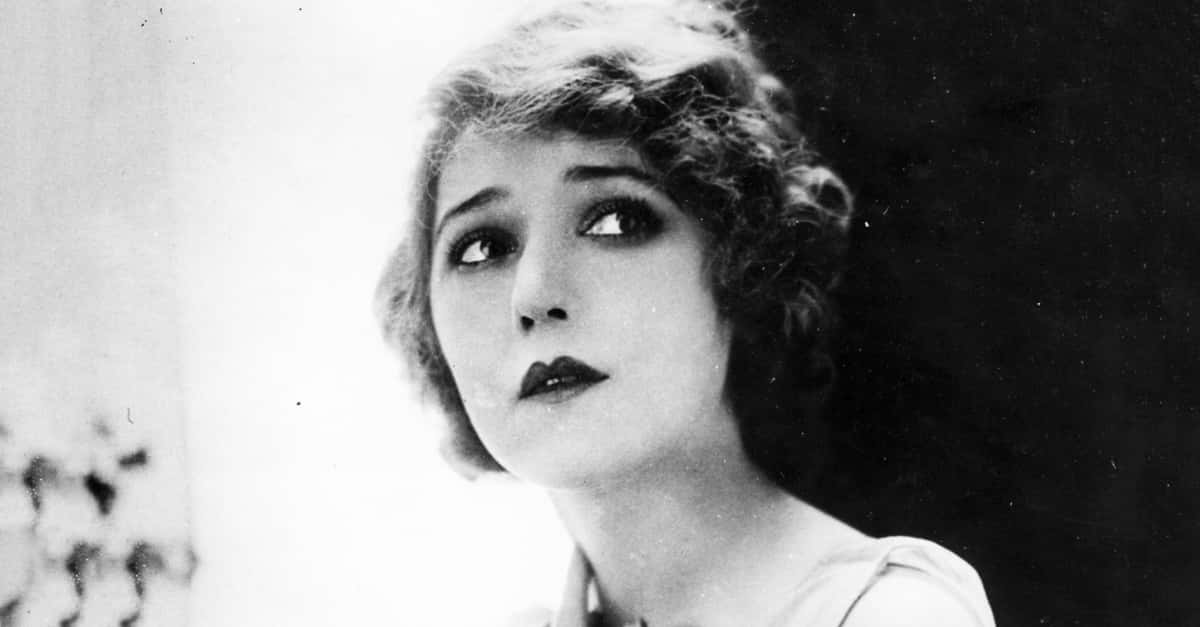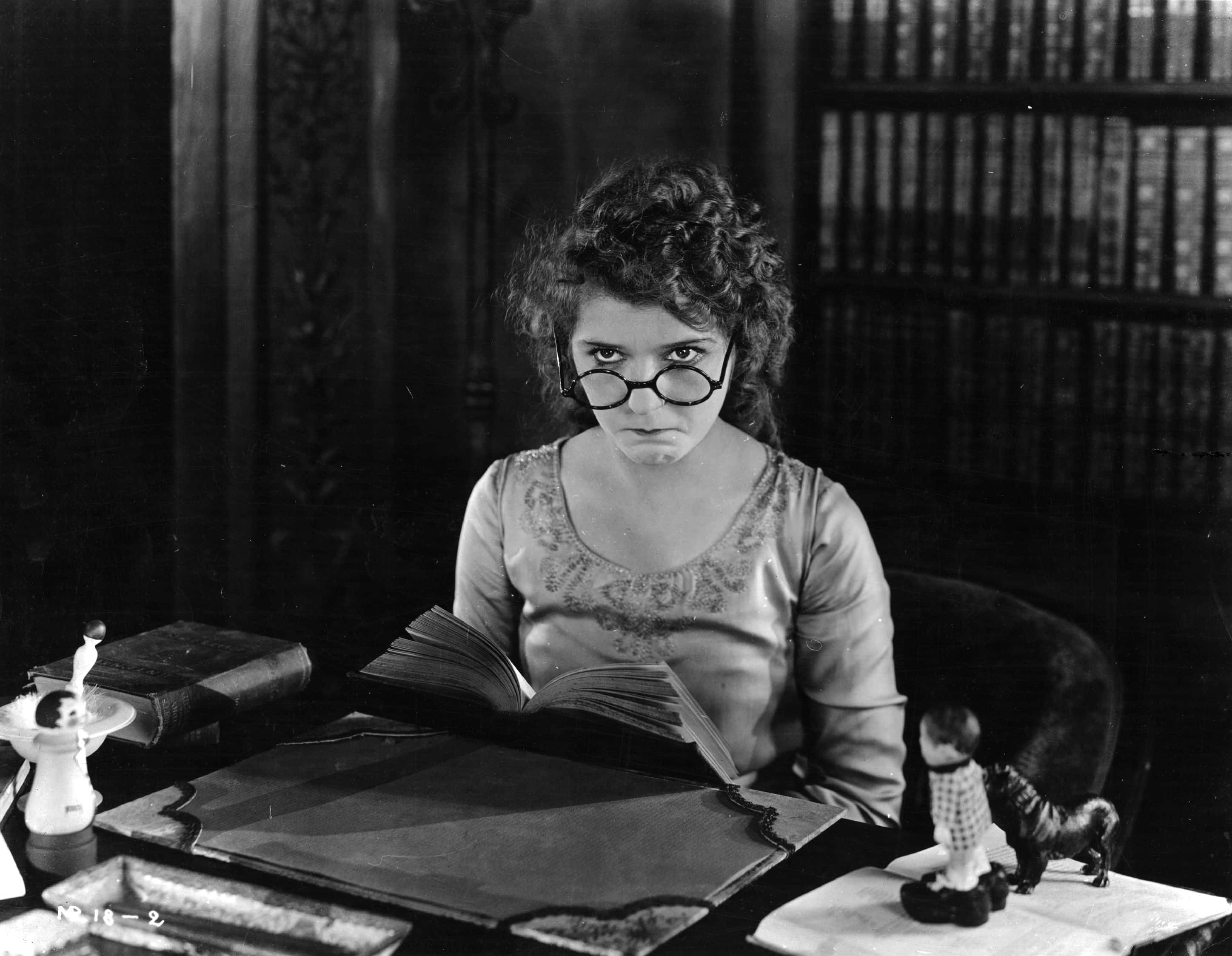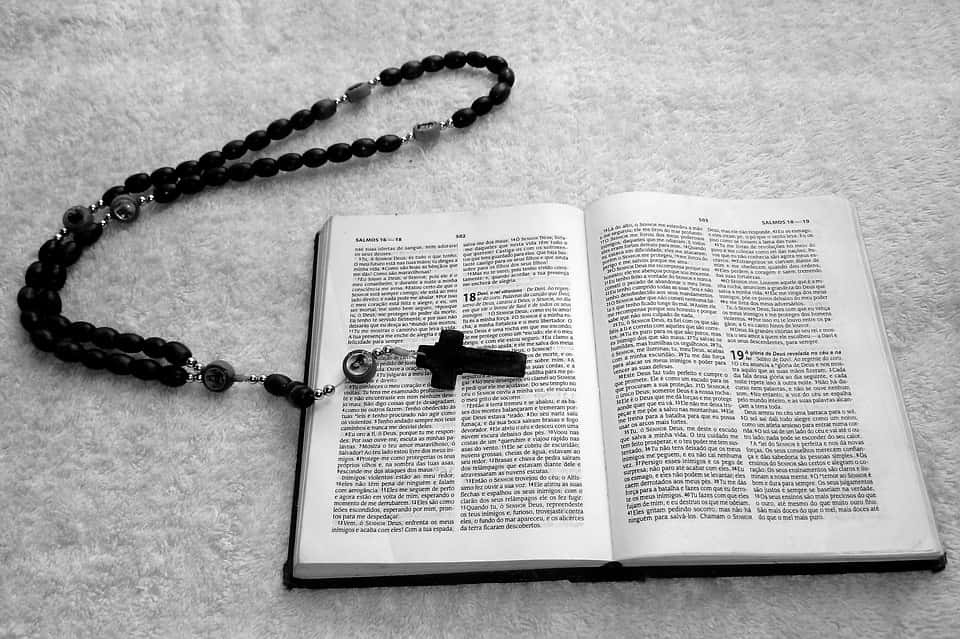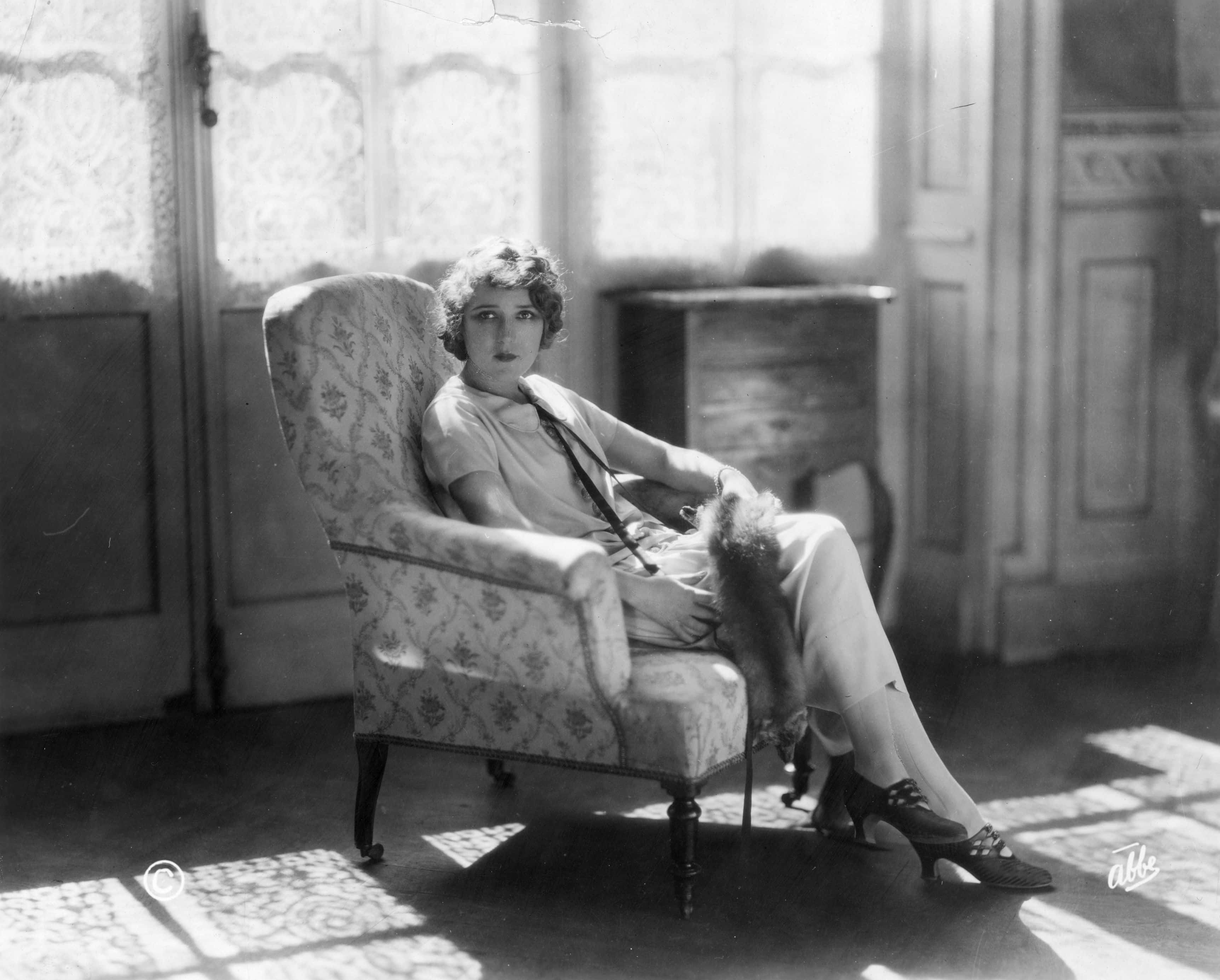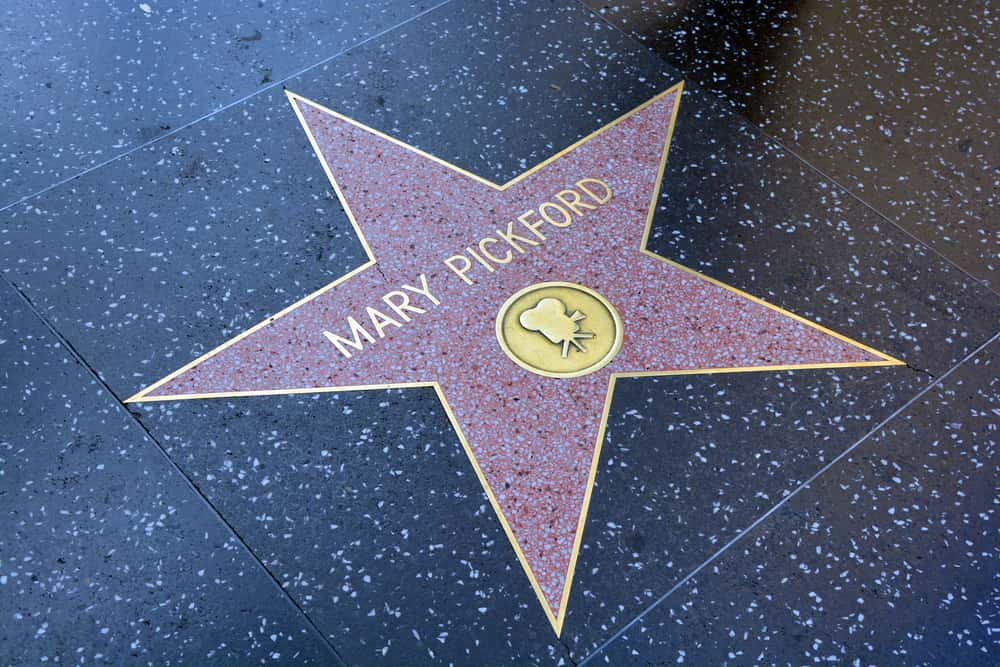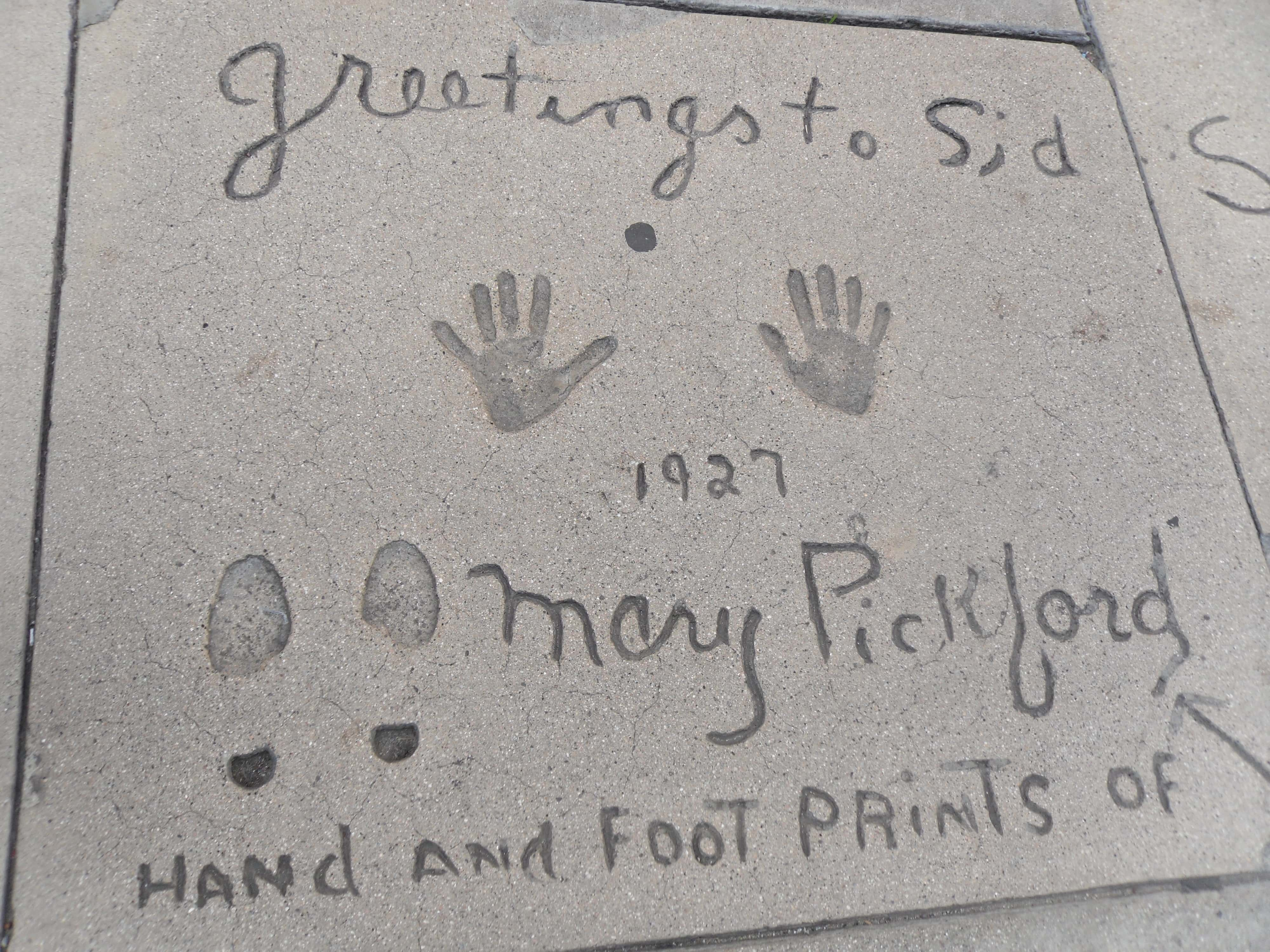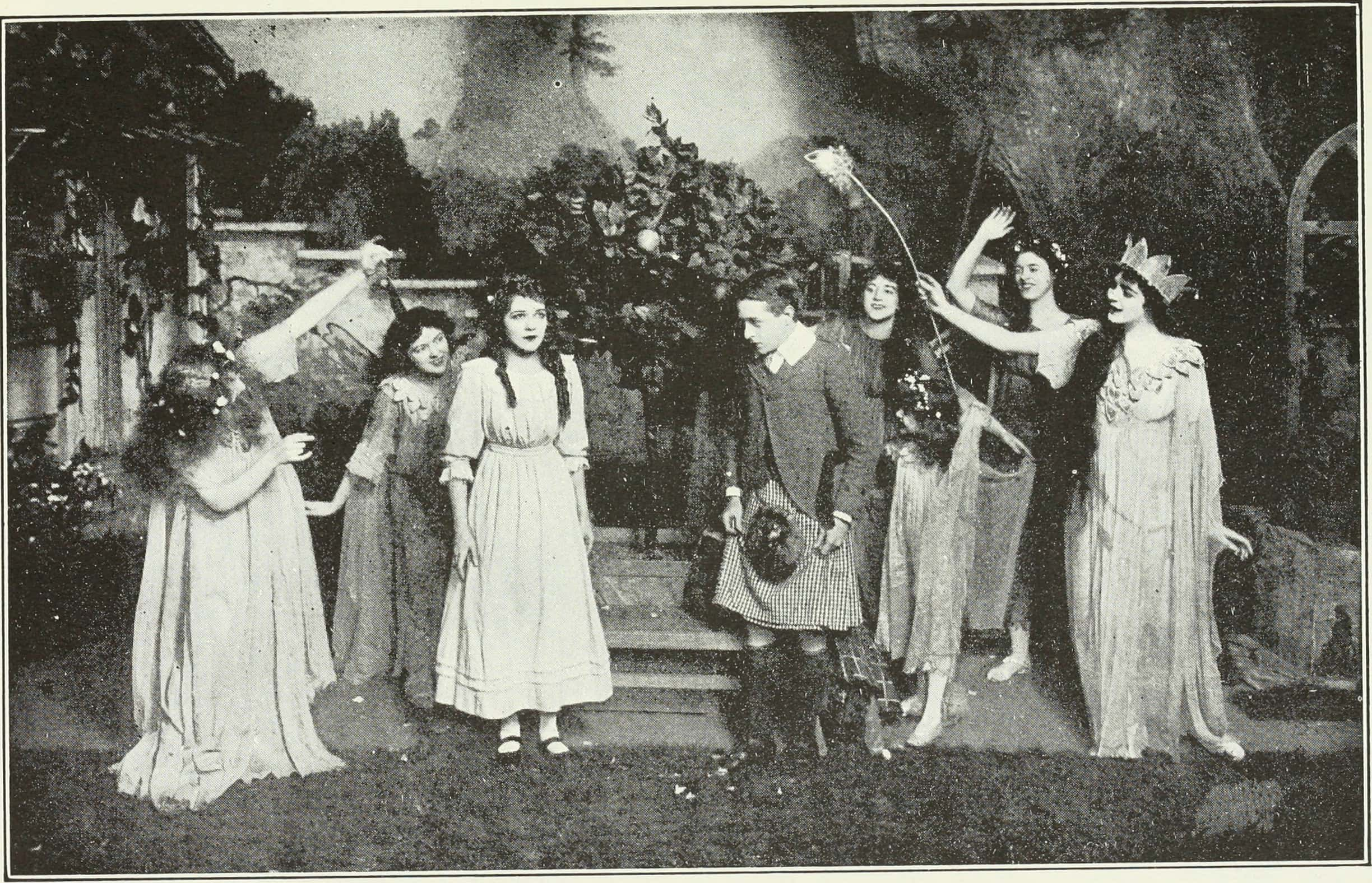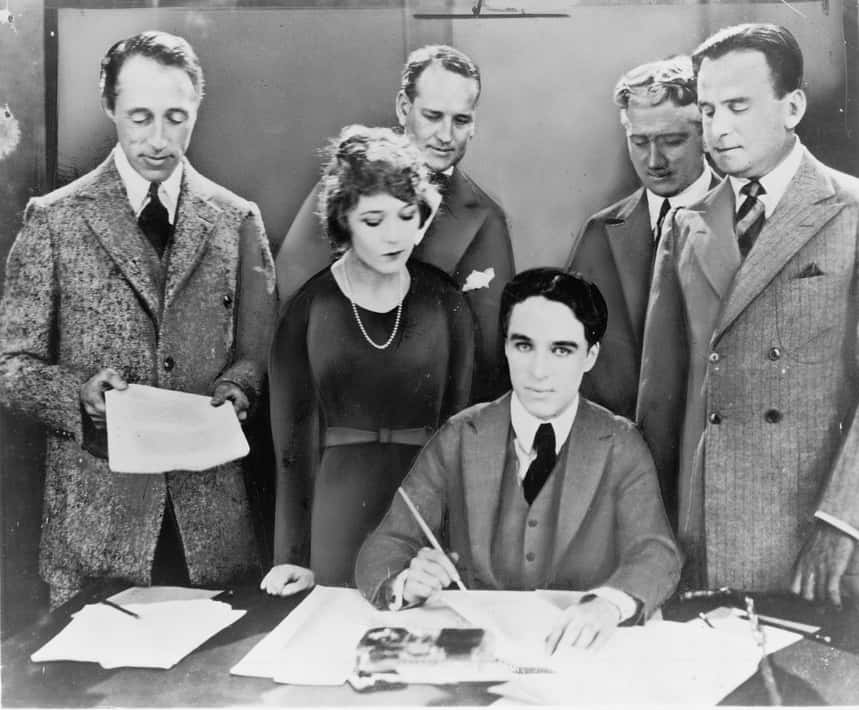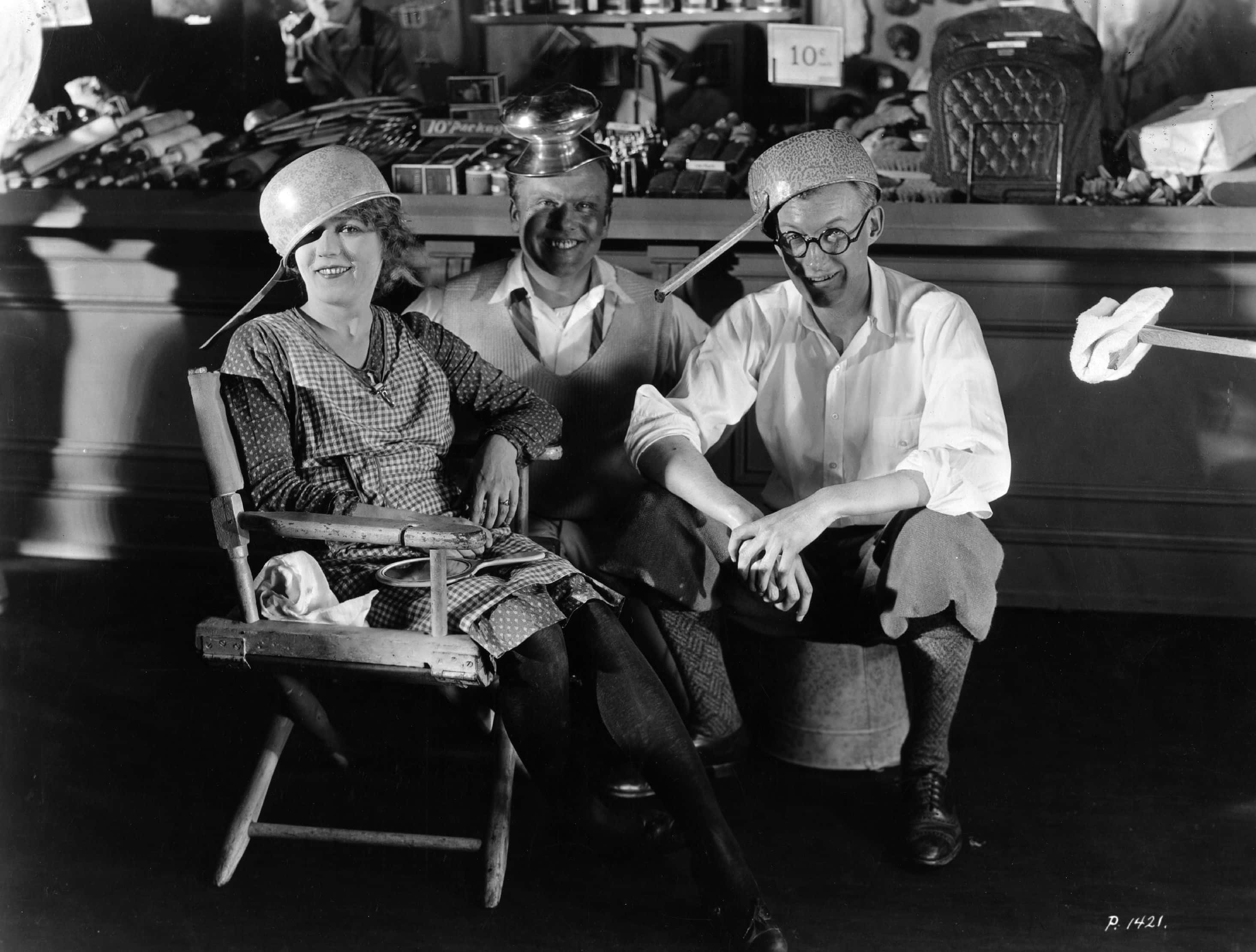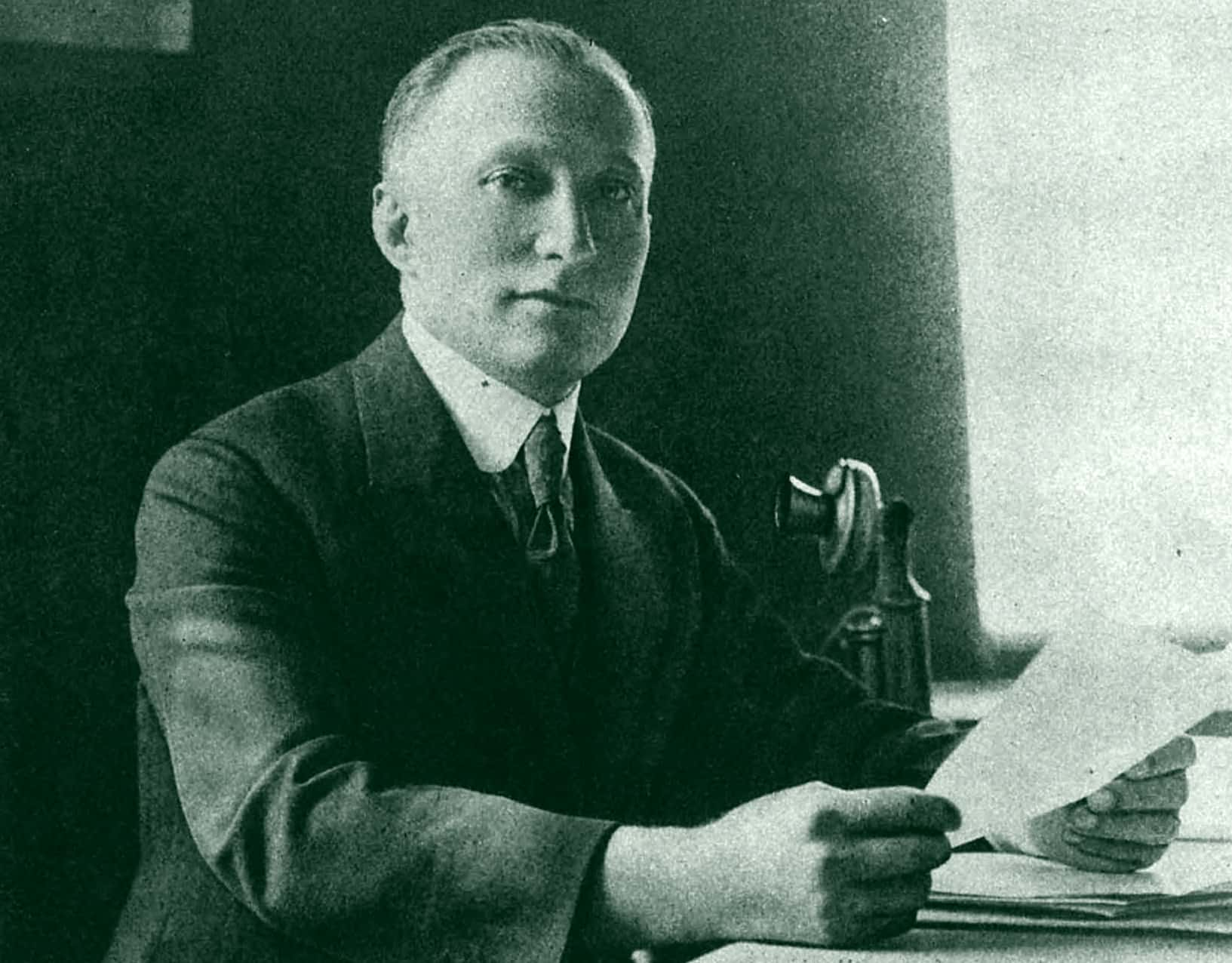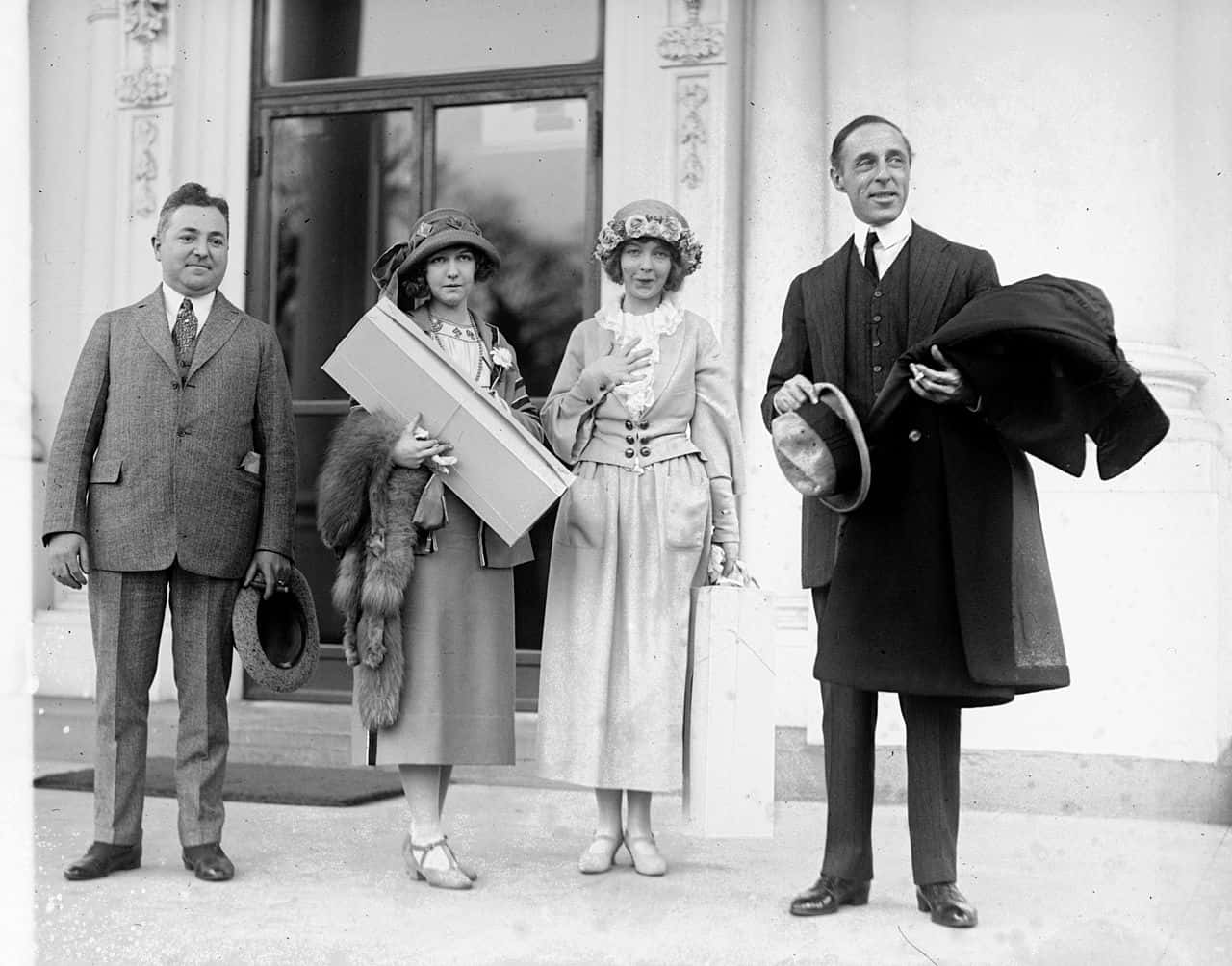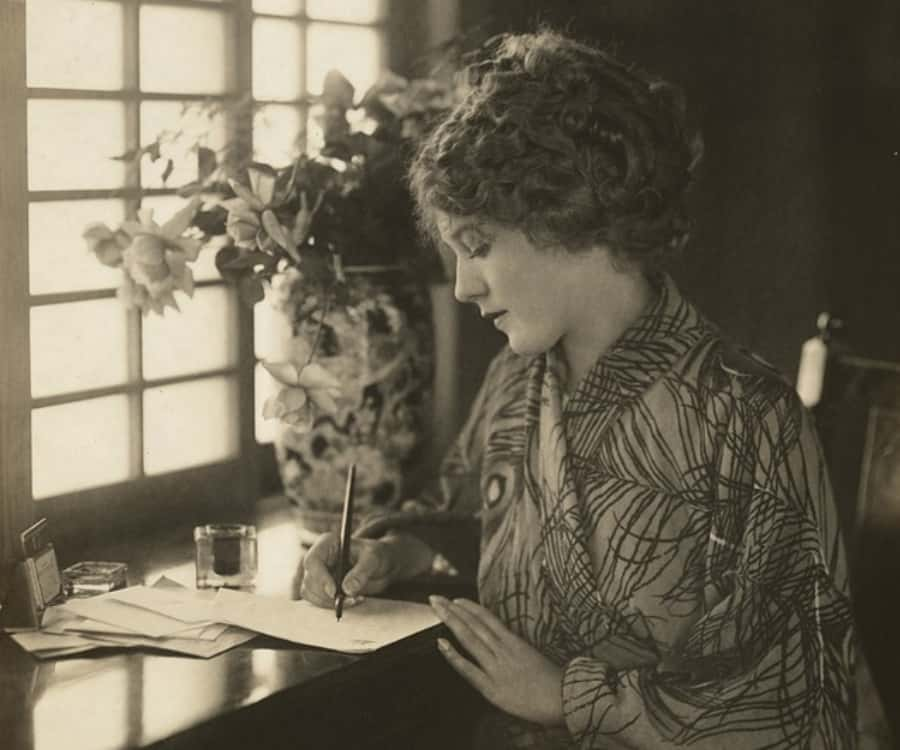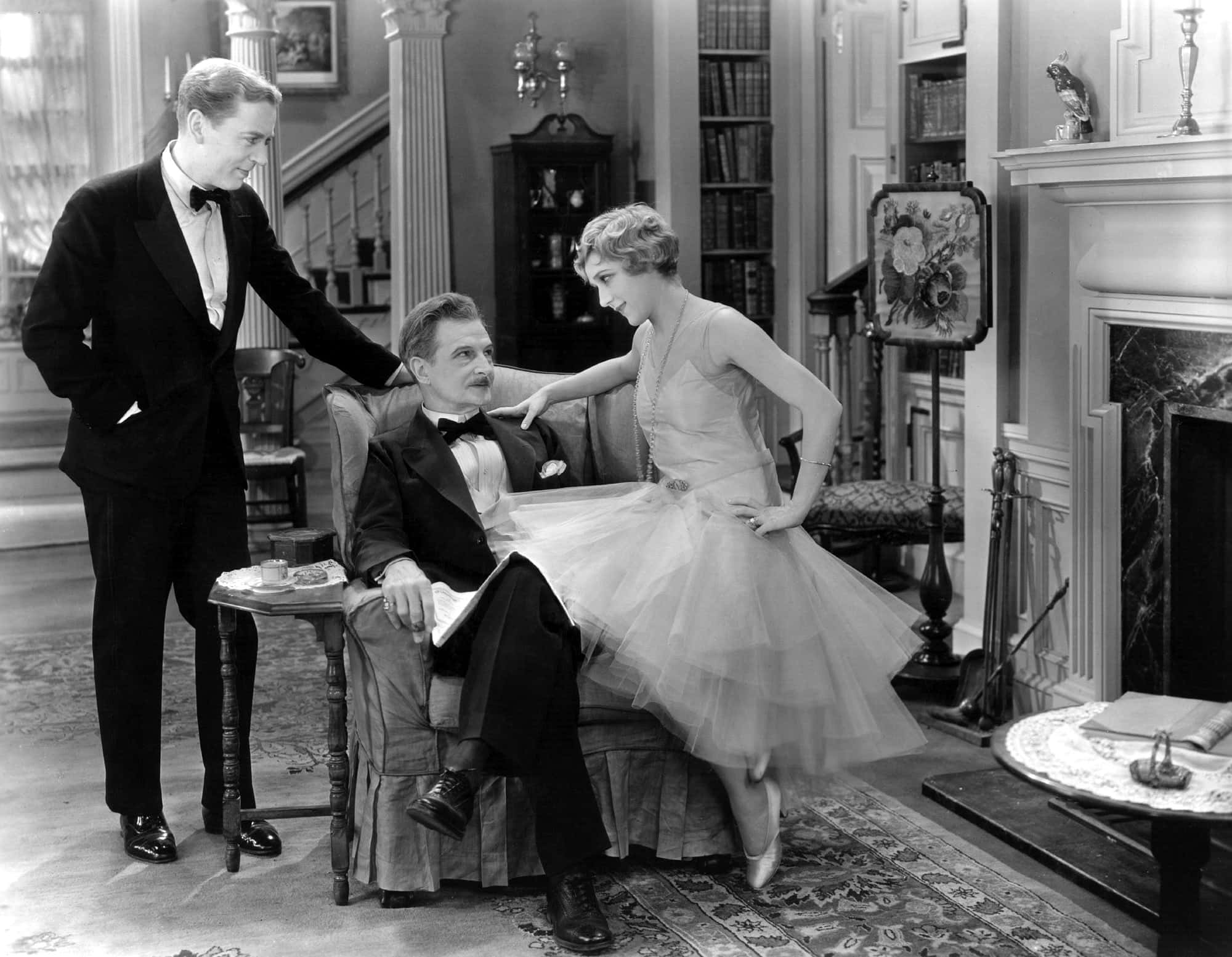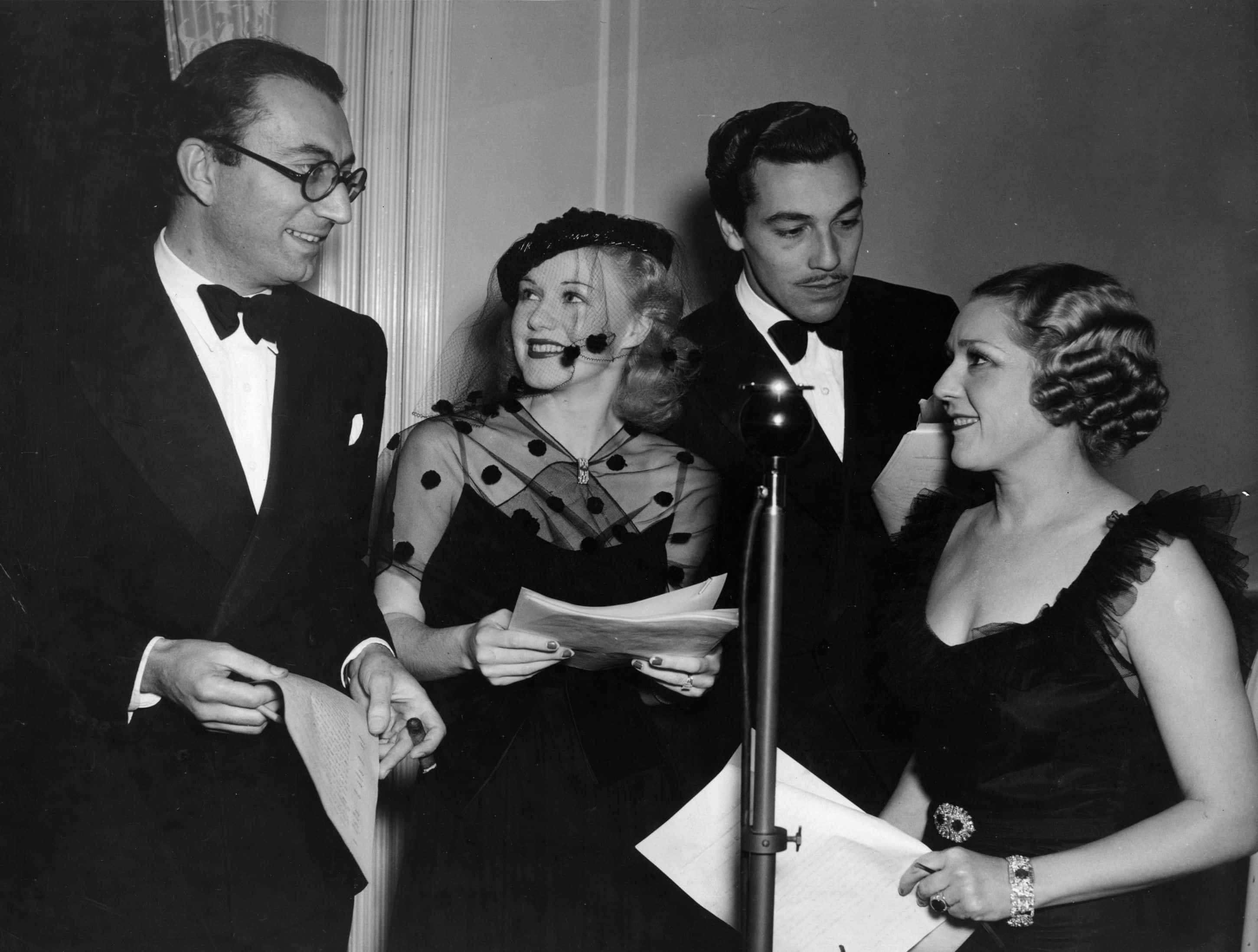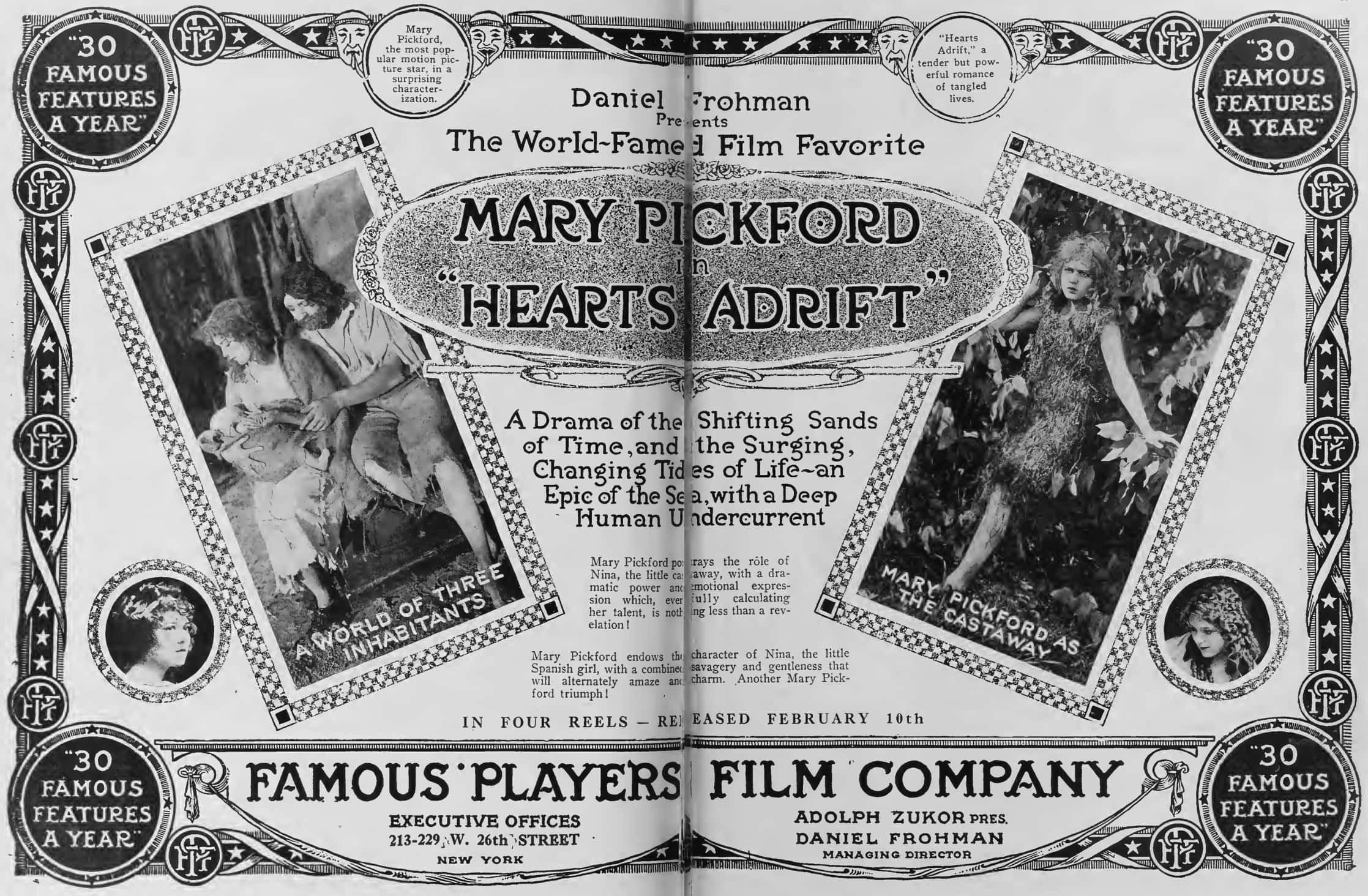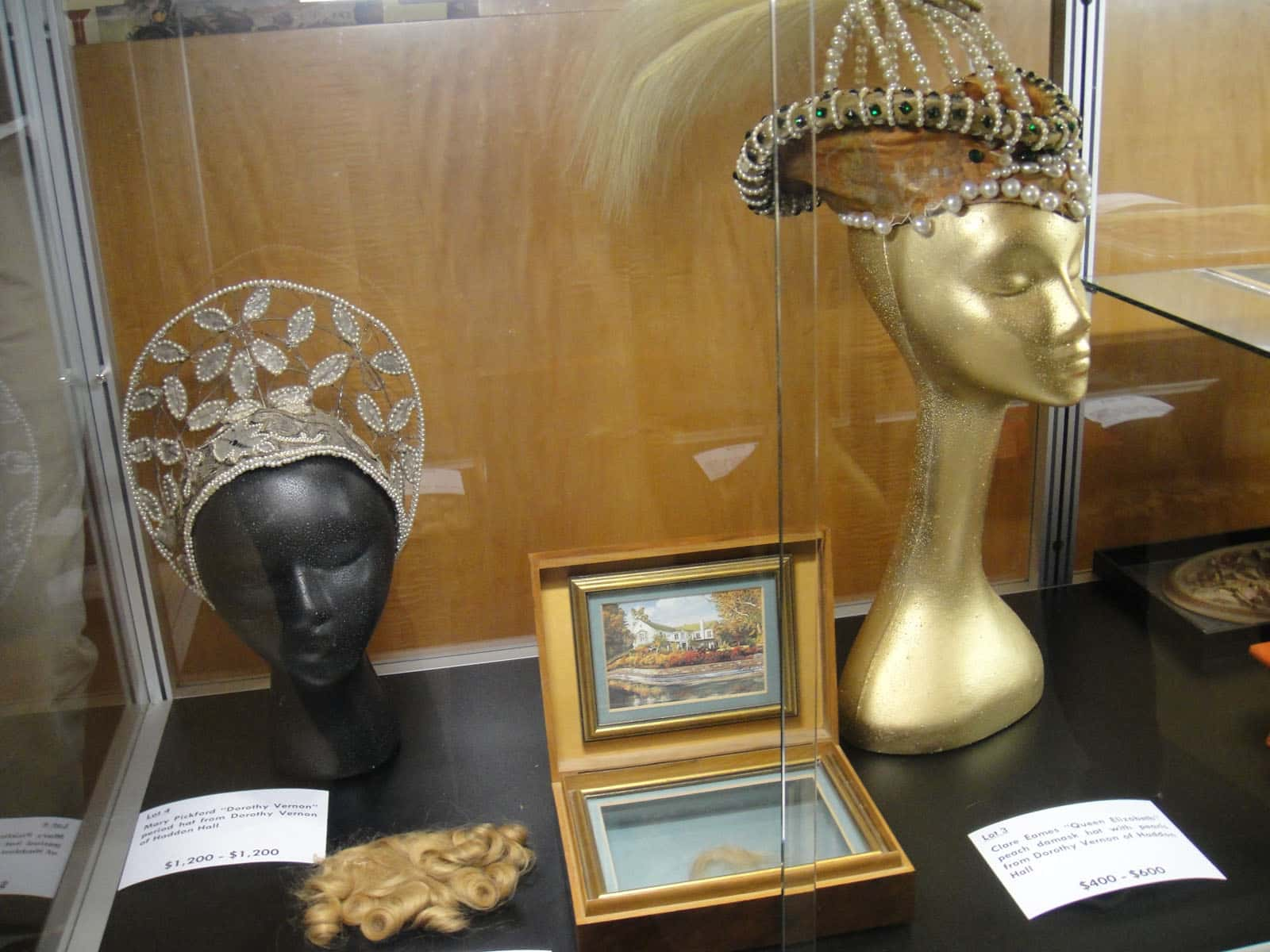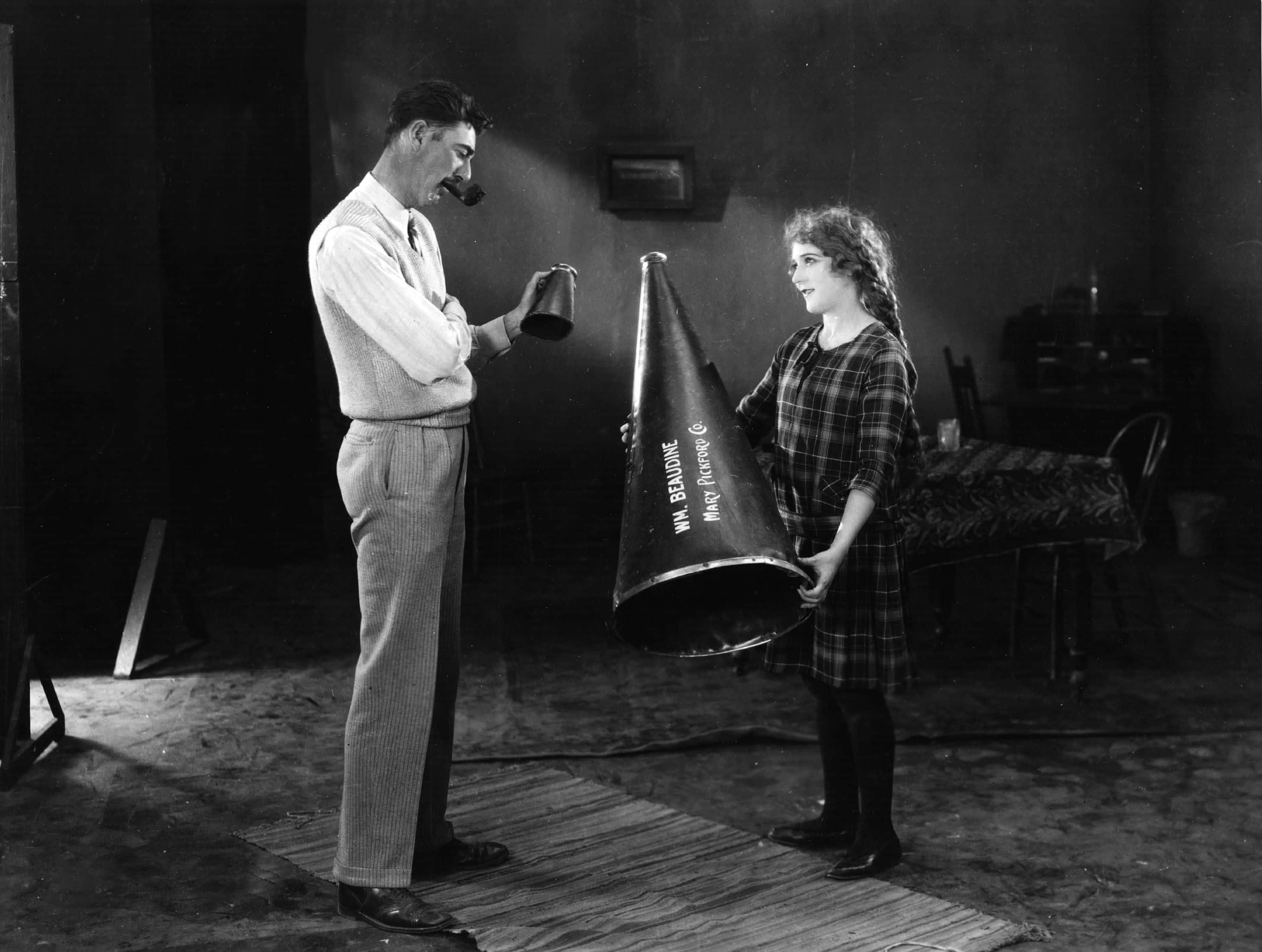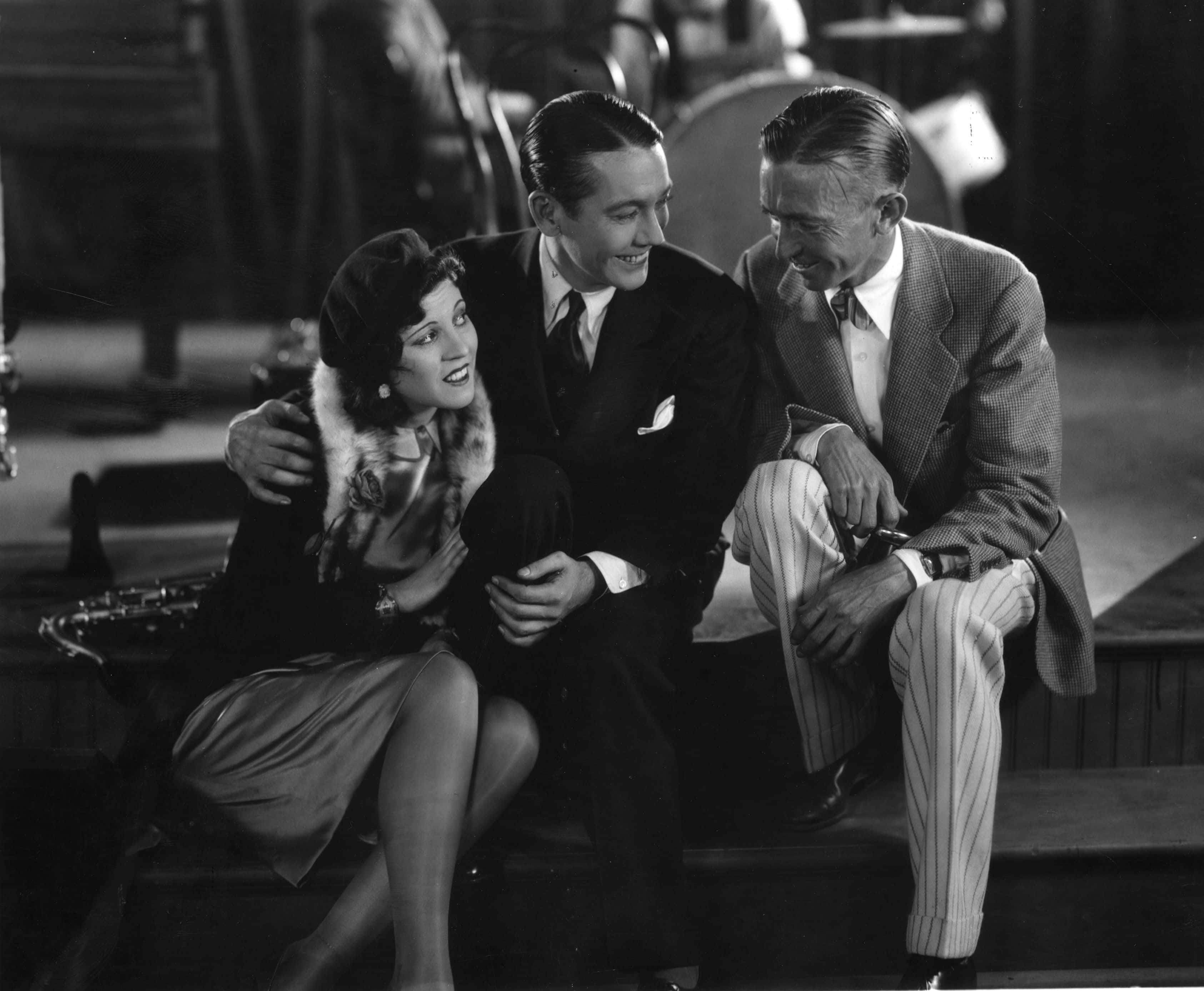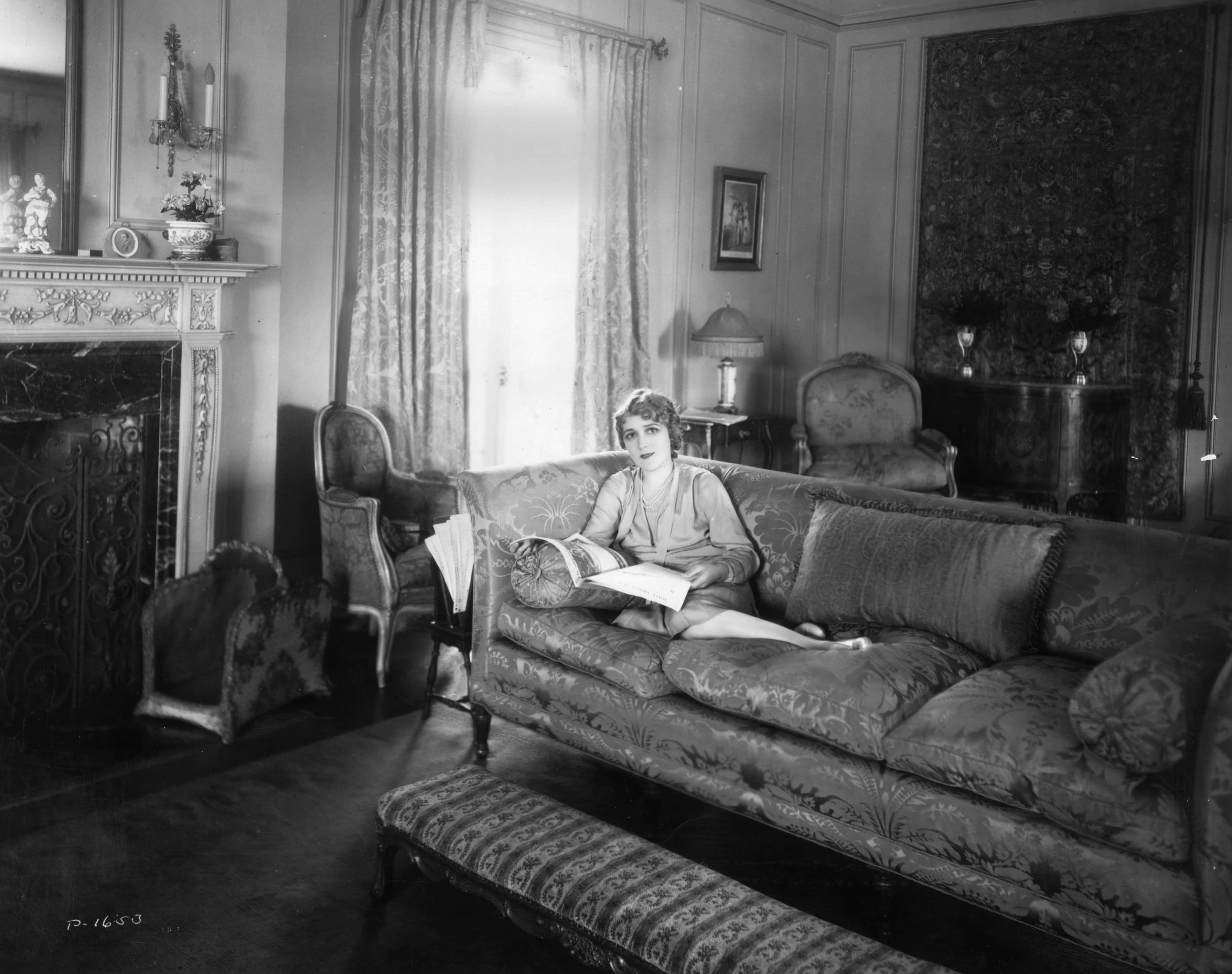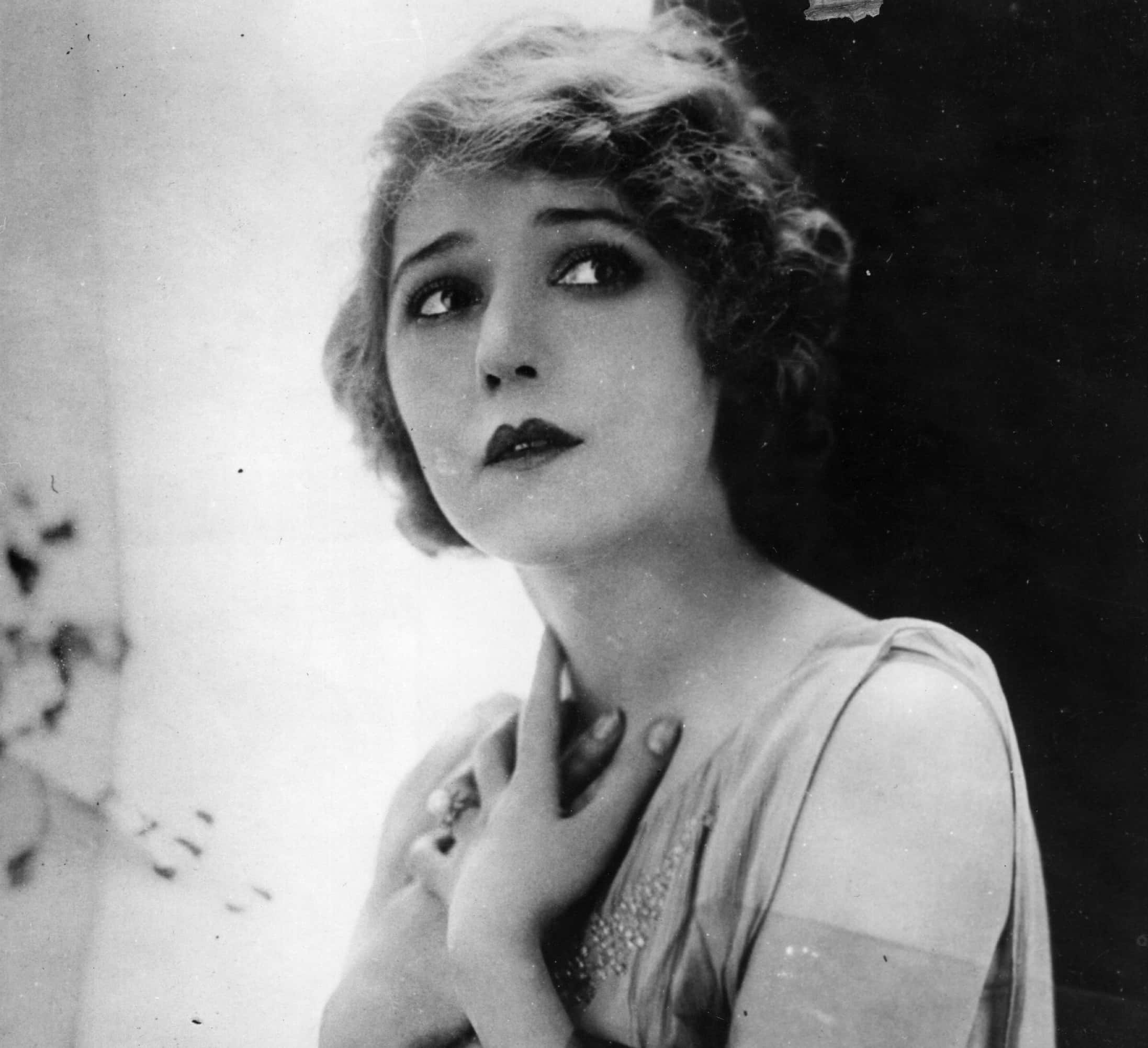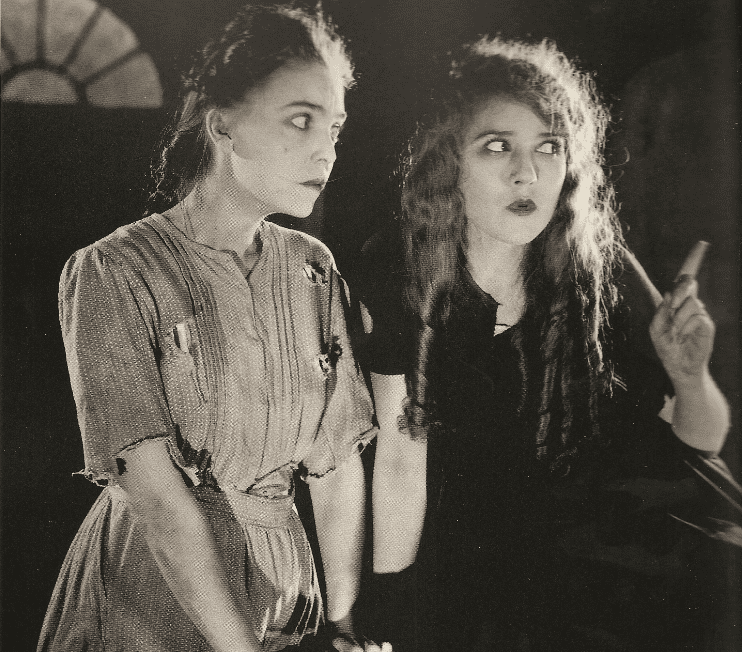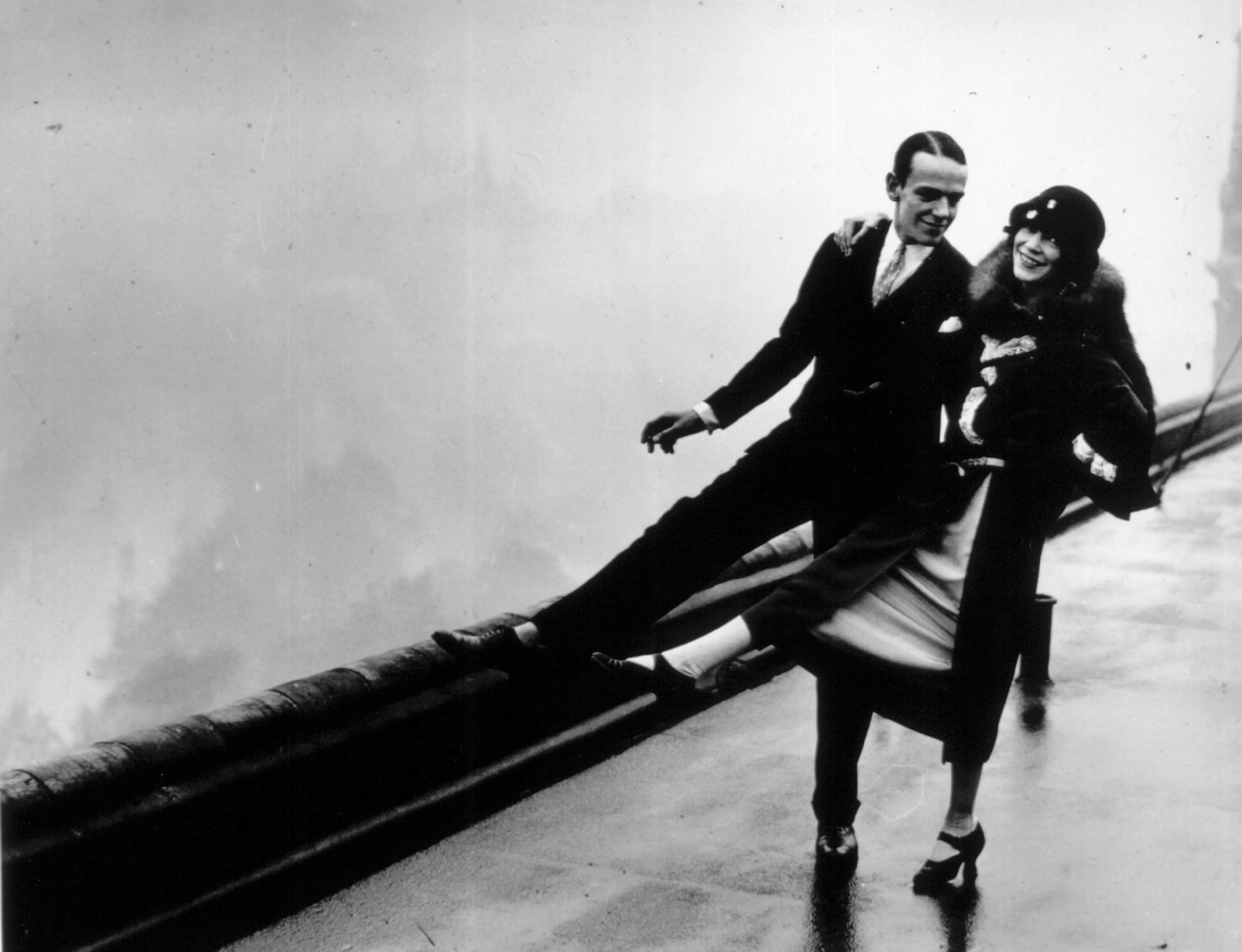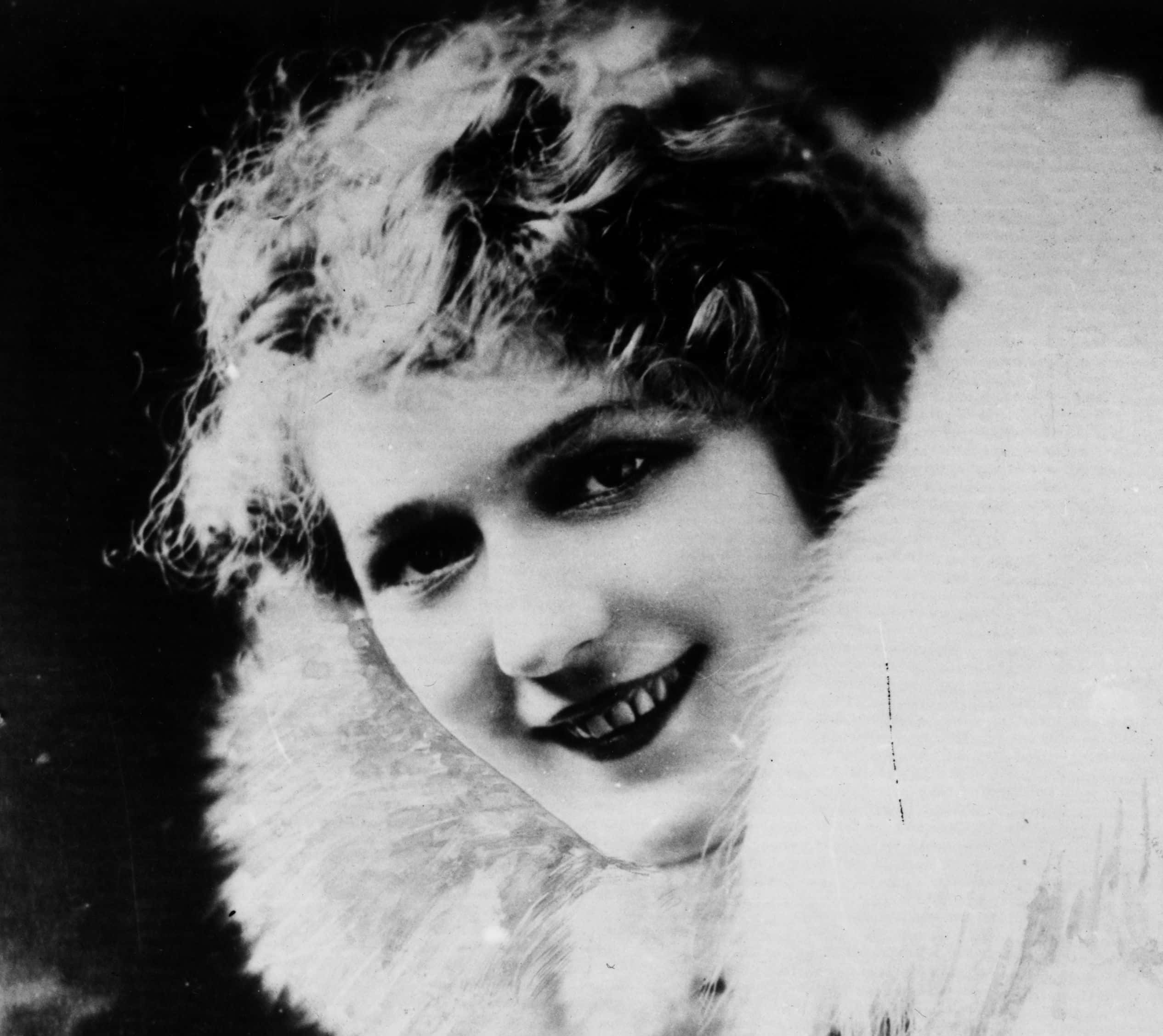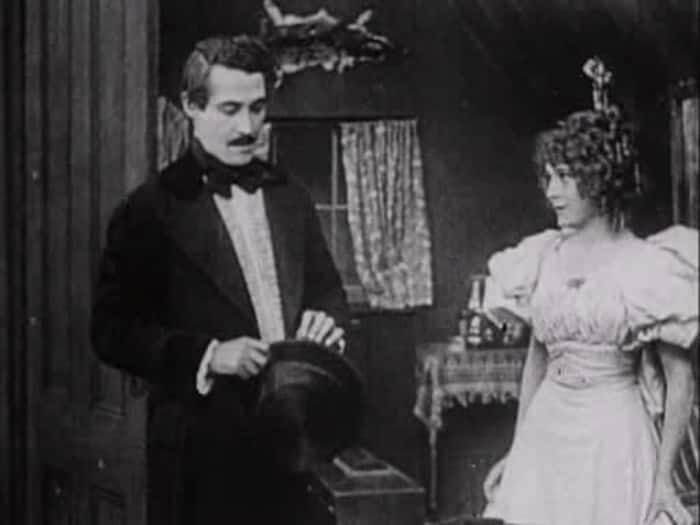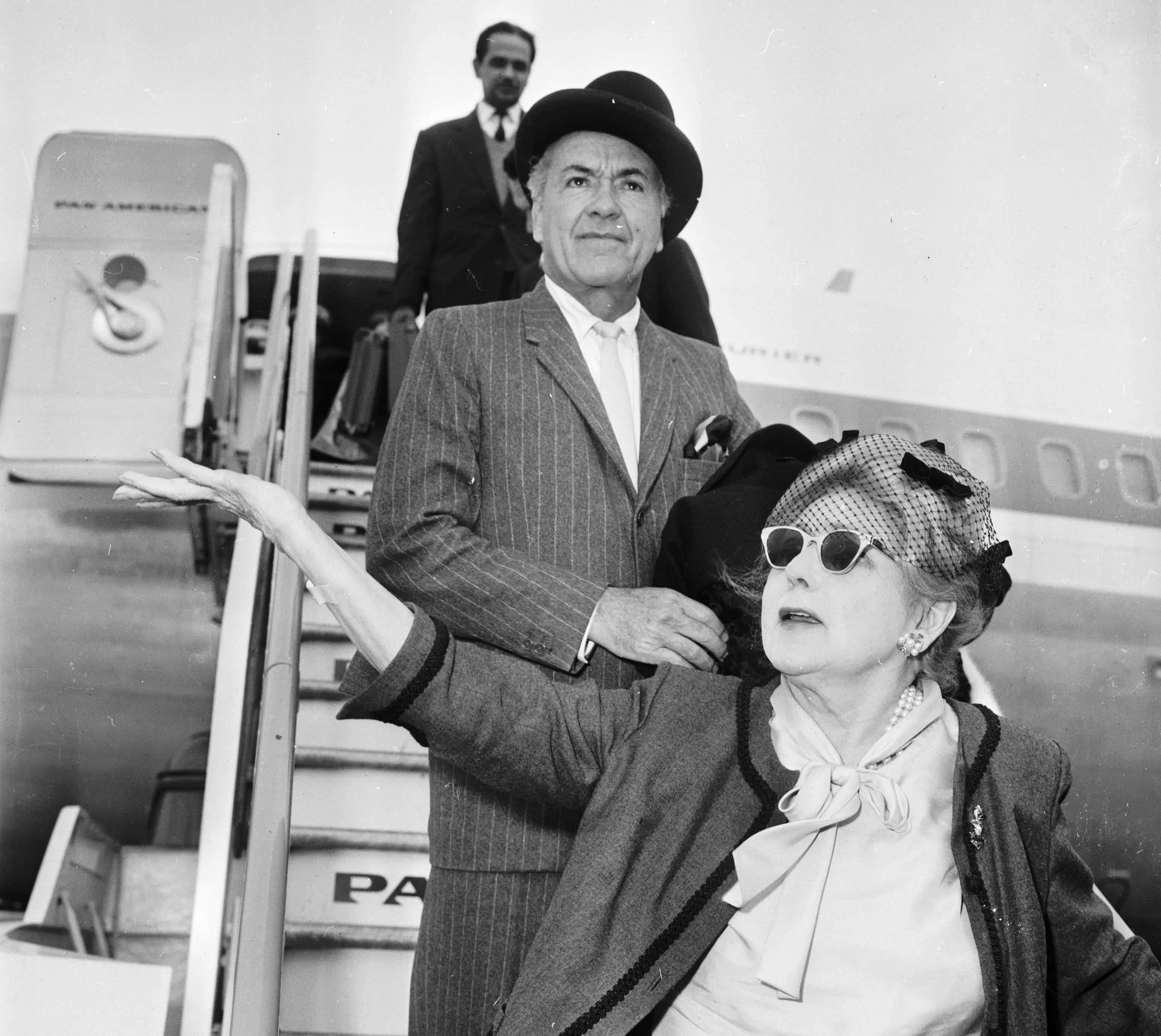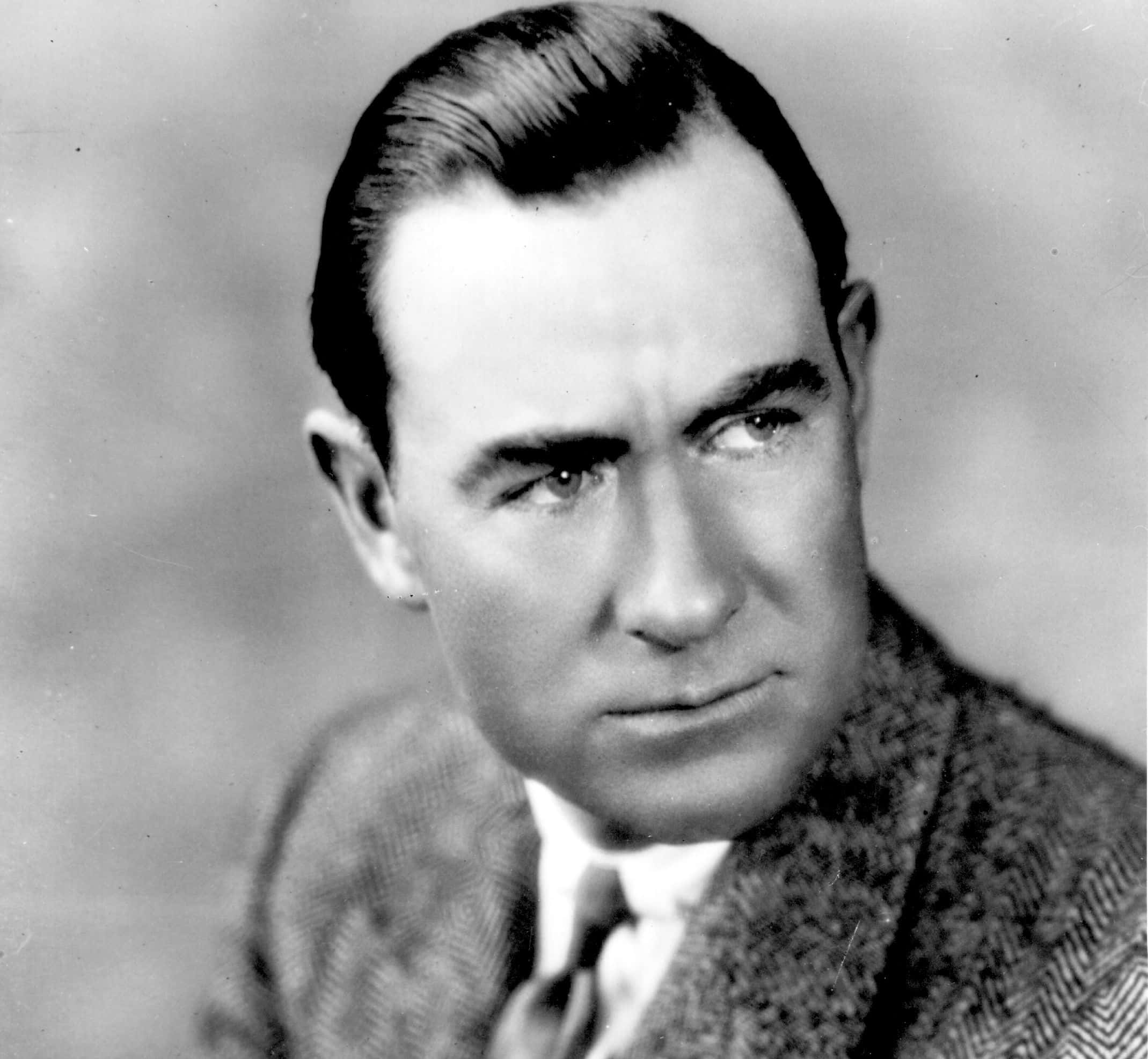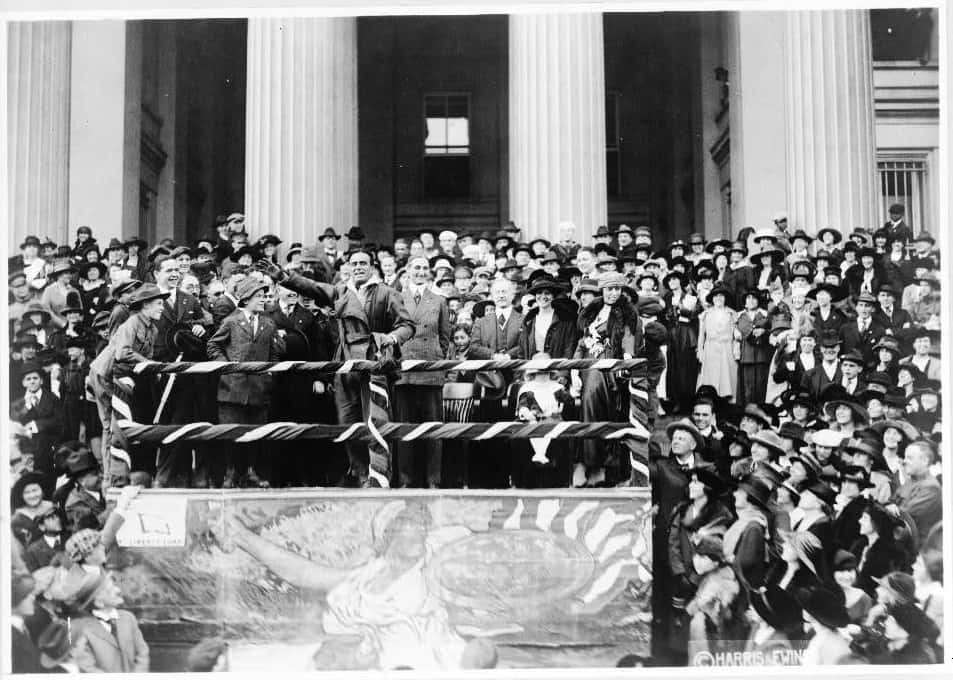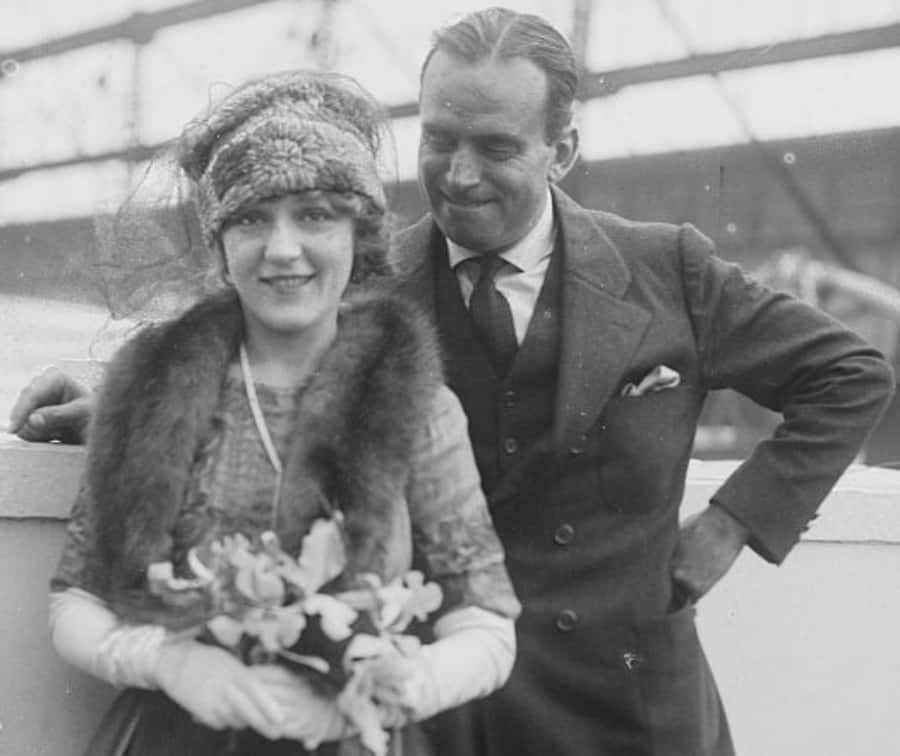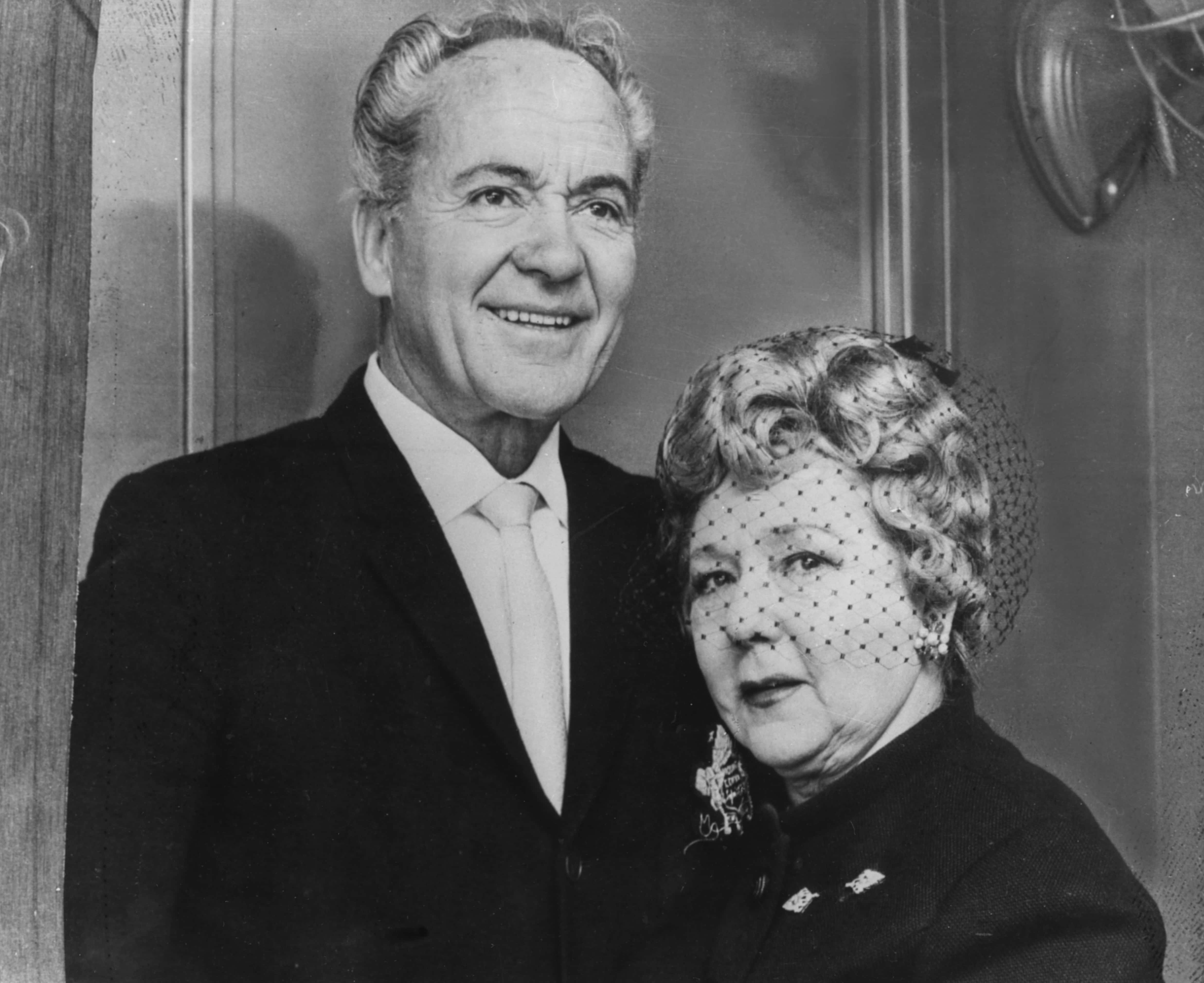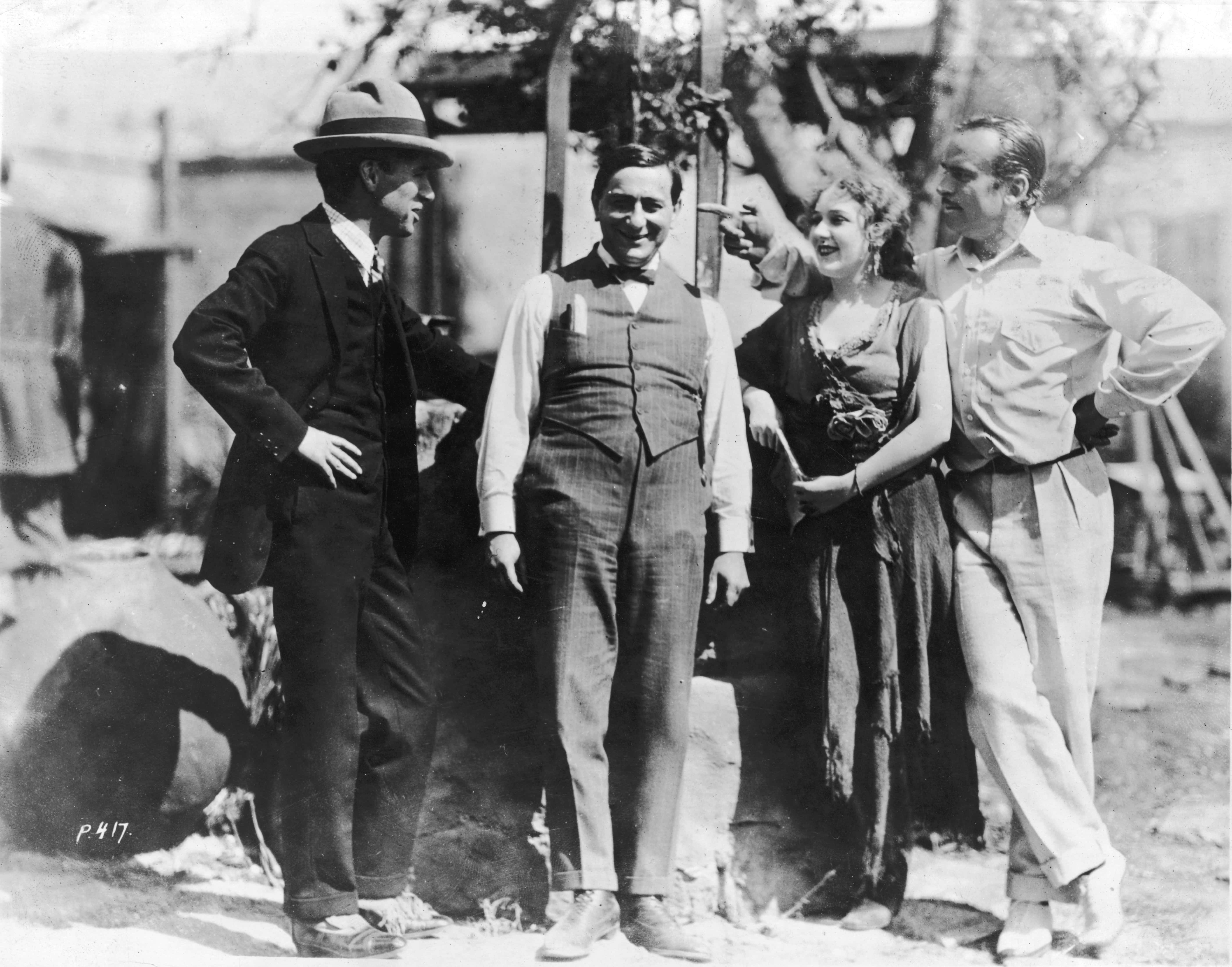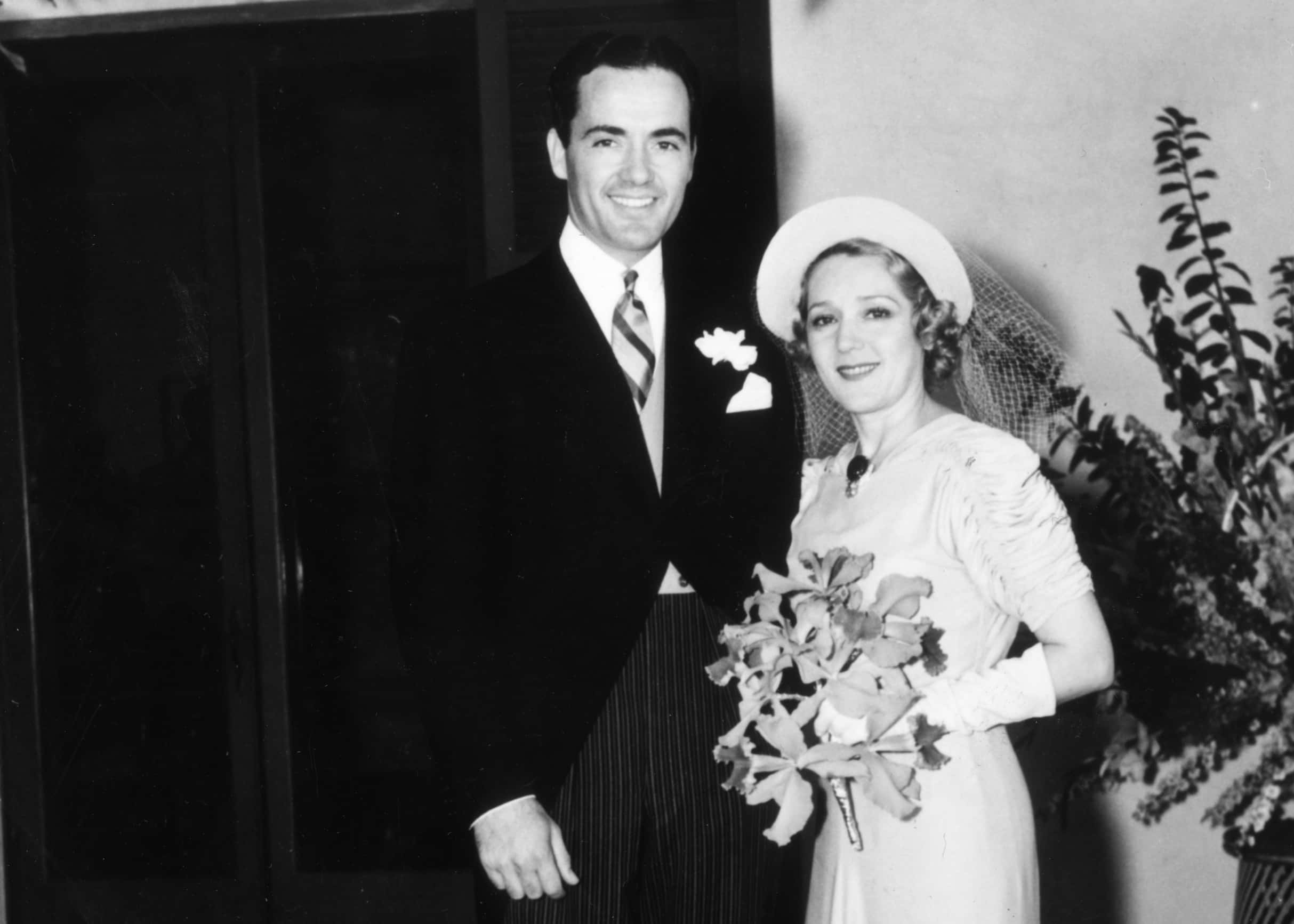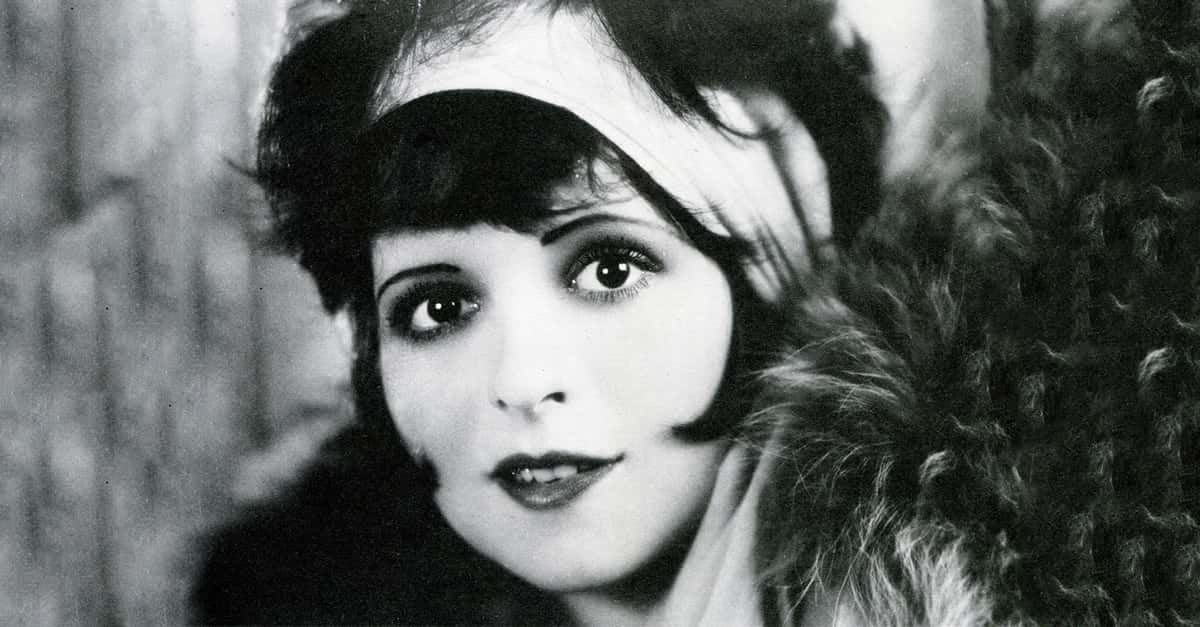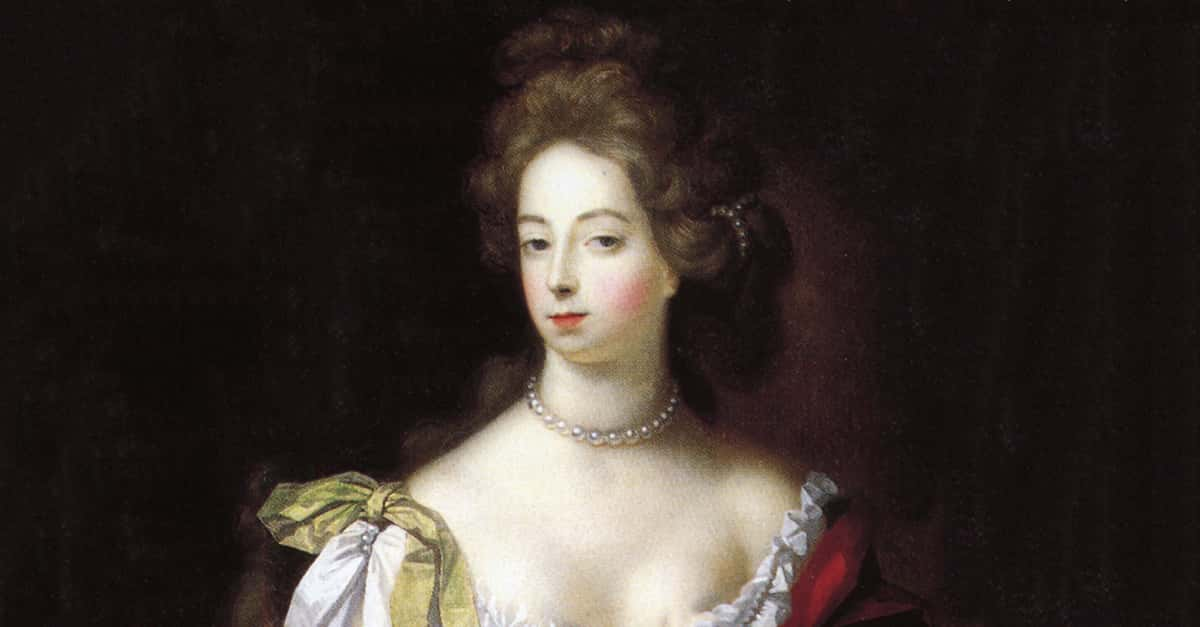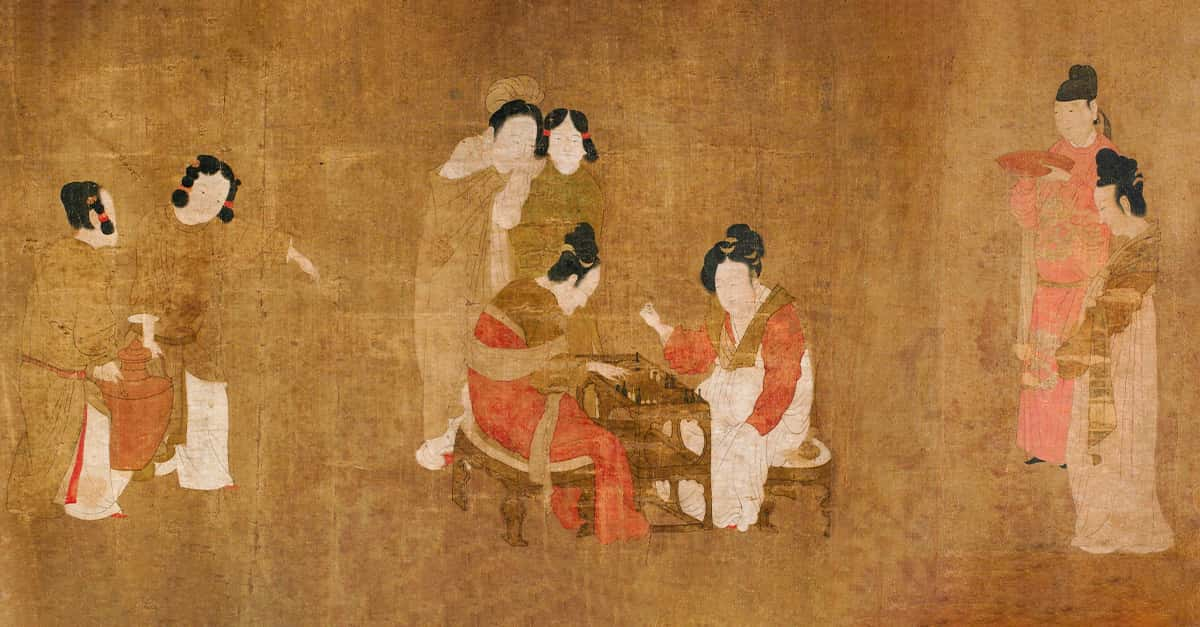She was known as many things, but the nickname which has endured the longest is the simple phrase “America’s Sweetheart.” In the early days of cinema, Mary Pickford was the star that everyone went to see. So who was this figure and pioneer of the silver screen? What did journey did she take to reach such a height of fame and power? Here are 42 glamorous facts about Mary Pickford.
1. American? Yeah Right, Hoser!
First things first: Pickford wasn’t American. She was born in Toronto on April 8, 1892! And she wasn’t an anomaly. Canadians have been deeply influential in Hollywood from the very beginning of its inception. Alongside Pickford, there were such figures as Fay Wray, Jack L. Warner, the co-founder of Warner Bros., and Walter Huston, who would become the patriarch of the subsequent Huston dynasty.
2. O, What’s in a Name?
Pickford’s real name was Gladys Louise Smith. It was upon the insistence of American producer David Belasco that she take on the stage name “Mary Pickford.”
3. Isn’t it the Same God?
Originally, Pickford was baptized into the Methodist faith, which was the faith of her father, John Charles Smith. However, when she was just four years old, her house went under quarantine due to sickness, and her maternal grandmother, fervently Catholic, had a Roman Catholic priest baptize Pickford into the Catholic faith as well.
4. Family Business
Pickford was the oldest of three children. She had a younger sister named Charlotte and a younger brother named John. All three would become actors, but Pickford would become the brightest star amongst the siblings.
5. Late Recognition
Pickford wasn’t given a star on the Hollywood Walk of Fame until 1960, when she was around 58 years old. Though at least that happened in her lifetime; Toronto wouldn’t give her a star on Canada’s Walk of Fame until 1999—but to be fair, it was only established the year before.
6. Was Her Name Too Hard to Remember??
“America’s Sweetheart” was Pickford’s most famous nickname, but it was far from her only one. Another one she earned was “the girl with the curls,” referencing her iconic curly hair. She was also nicknamed “Sweet Mary,” “the Glad Girl,” and “Goldilocks.”
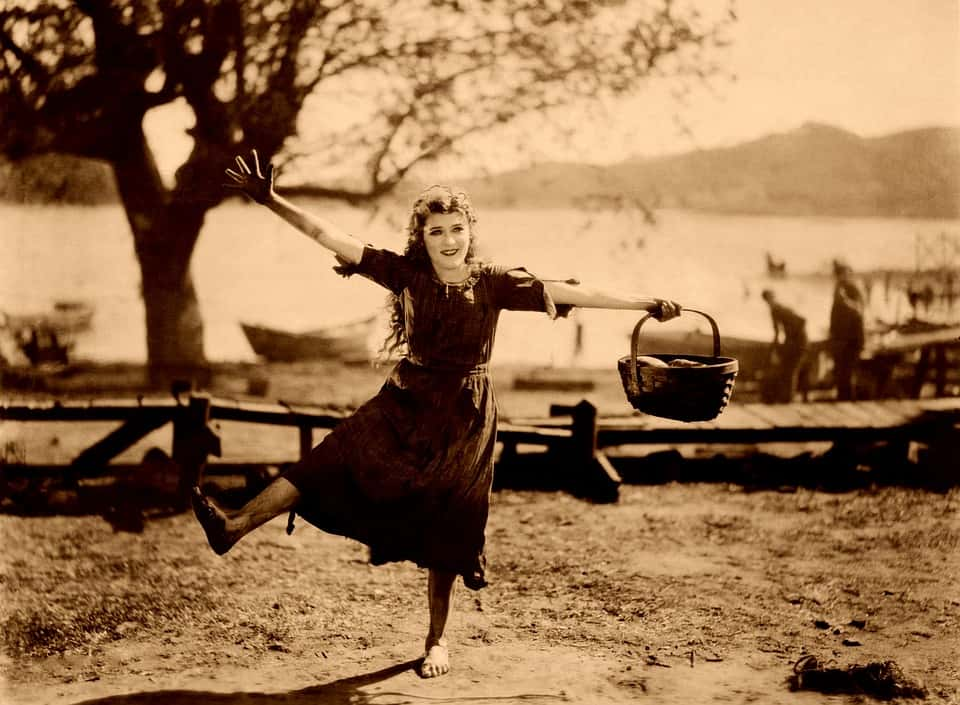 Pixabay
Pixabay
7. Making My Mark on Hollywood
Incredibly, Pickford was one of the original 36 founders of the Academy of Motion Picture Arts and Sciences. In case you’re confused, this is the organization behind the Academy Awards. Pickford would go on to be acknowledged by the Academy for her work as an actress, but we’ll get to that later.
8. A Tradition Is Born
Pickford, along with Douglas Fairbanks Sr., was the first celebrity to leave her handprints into the cement outside Grauman’s Chinese Theater in Hollywood.
9. Last Chance
After making her name on the stages of Toronto, Pickford began touring the United States alongside her mother and siblings. However, things didn’t go as well for them as before, and after six years, Pickford was ready to walk away from acting if things didn’t work out.
However, her fortunes turned just in time; in 1906, Pickford began acting on Broadway, and in 1909, she won over the film director D.W. Griffith in a screen test. She was taken on by the Biograph Company, earning $10 a week—actually twice the normal wages that someone could expect at that time.

History's most fascinating stories and darkest secrets, delivered to your inbox daily.
10. Sylvester Stallone Is Eternally Grateful
Alongside Douglas Fairbanks Sr., Charlie Chaplin, and D.W. Griffith, Pickford was responsible for the founding of United Artists film company in 1919. United Artists was founded in order for actors to have more sway over their careers rather than be forced to sign demeaning contracts with the big film studios of the day. While it’s had its ups and downs, United Artists continues to endure, providing the world with such classics as West Side Story, Network, Fiddler on the Roof, and Rocky.
11. Let the Good Times Roll
In 1909 alone, Pickford appeared in 51 films. That’s almost one per week! Admittedly, she wasn’t usually the star, and these films weren’t always feature-length, but given how rare it is even today to make a regular salary as an actor, Pickford was living the good life! And this was just the start of her career in films.
12. Let’s Keep Setting Trends!
After appearing in a Broadway adaptation of her own film A Good Little Devil in 1912, Pickford decided to focus entirely on her film career. She joined a company which American producer Adolph Zukor had just formed at the time. This company, called Famous Players in Famous Players, was very unique for its day because it dealt exclusively in feature films. You might know it by its current name: Paramount Pictures.
13. Just Starting Careers Here, No Biggie
In 1912, Pickford introduced two sisters from Ohio to D.W. Griffith. She had befriended them when they became her new neighbors. These sisters were Dorothy and Lillian Gish, who became huge stars of Hollywood’s silent film era. Lillian, in particular, was known during her lifetime as the First Lady of American Cinema.
14. I Ain’t No Pushover!
Within just three years of her decision to focus on feature films, Pickford took on the mantle of producer, and she took that mantle very seriously. Pickford would oversee “every aspect of the making of her films, from hiring talent and crew to overseeing the script, the shooting, the editing, to the final release and promotion of each project.”
15. Silver Medal
Pickford was the recipient of only the second Academy Award ever given to an actress! She won it for her performance in 1930’s Coquette. It was only the second year that the Academy Awards were given out.
16. What a Coincidence, Eh!
Interestingly, Pickford set a trend when it came to the Oscars. Beginning with her, for three years the Academy Awards handed out the Best Actress Oscar to Canadian actresses. These women were Pickford, Norma Shearer, and Marie Dressler.
17. I’m a Star!
One of the biggest films of her early career was the romantic short film called Hearts Adrift. The film was such a success, in fact, that Pickford felt confident enough to demand a pay raise from Adolph Zukor. It wouldn’t be the last time she asked for such a pay raise in her career, either.
18. “If I had a Million Dollars…”
In 1917, Pickford signed her first contract worth $1 million. It’s no wonder that she had a reputation for being a hard bargainer. One producer once commented that it “took longer to make one of Mary’s contracts than it did to make one of her pictures.”
19. “I Think Somebody Somewhere Must Be Tolling a Bell…”
One of the biggest transitions in Hollywood’s history was when the “talkies” emerged. These films incorporated sound into their makeup and revolutionized the whole industry. As a huge star from the silent era, Pickford was naturally skeptical and miffed with the talkies. She famously commented, “Adding sound to movies would be like putting lipstick on the Venus DeMilo.”
20. Directorial Debut
Over the course of her career, Pickford worked as a director on one film. That film was the 1924 silent feature film Dorothy Vernon of Haddon Hall. However, she went uncredited for her work, giving sole credit to Marshall Neilan.
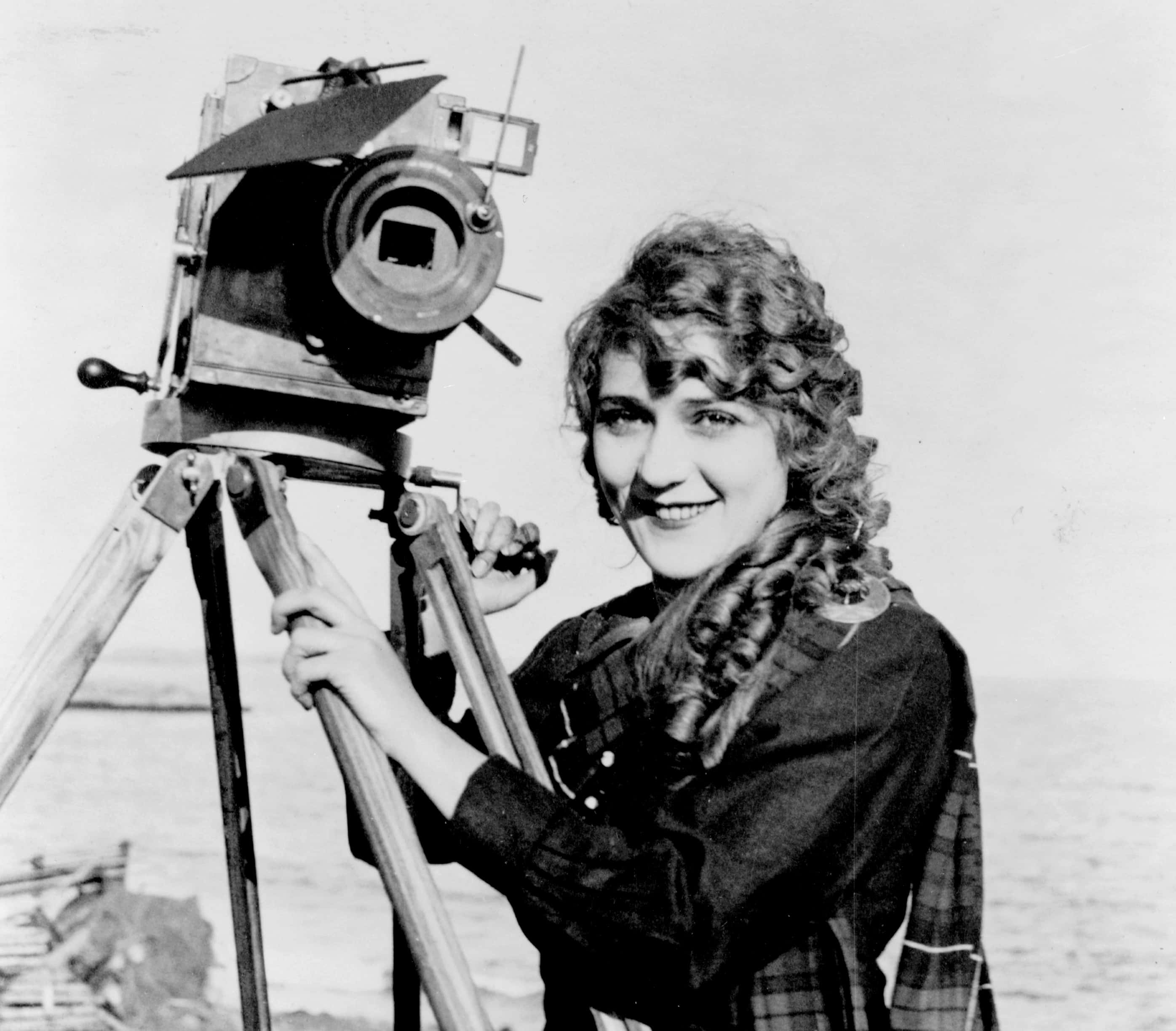 Wikipedia, Library of Congress via pingnews
Wikipedia, Library of Congress via pingnews
21. Price Check!
Speaking of Dorothy Vernon of Haddon Hall, the film features the most expensive costume ever made for a silent film. This honor goes to the Elizabethan dress which Pickford wears in it. In the early 1920s money, it cost $32,000, which would be around $470,000 in 2019 currency.
22. She Practically Breathes Movies!
Pickford’s love for making films led her to expand her talents far beyond acting, as her time producing movies proves. However, it went further than even that. Pickford took up screenwriting as well, writing as many as 30 different shorts and feature films—though IMDb only credits her for fourteen of them.
Additionally, she would employ the same cameraman for her movies and would contribute to developing new lighting techniques to improve the quality of her films.
23. Little Bro
Pickford’s brother would follow his sisters into the acting business. Known as Jack Pickford, he would pick up several small roles. Just like his older sister was “America’s Sweetheart,” Jack was an all-American boy onscreen. Unlike his public image, however, Jack was plagued by addictions to illegal substances, alcohol, and partying. All of these may have contributed to his early death in 1933 at the age of 36.
24. Early Retirement
Pickford’s final film role of her acting career was for Secrets, which was released in 1934. She was barely in her early 40s when retired from the screen, but she would make sure to stay busy after that.
25. It’s Just a New Do!
If you think celebrities getting flak for changing their appearance is a novel thing born out of the Internet age, you might be surprised that Pickford was dealing with that kind of hate before your grandparents were even born! Pickford had always been close with her mother and was devastated when she died of breast cancer in 1928.
Her reaction was to put away the curly locks that had defined the early part of her career. In fact, her hair had become associated with innocent female virtue by American society, and a lot of people were horrified and outraged when she dared cut off her hair. She received hate mail for her decision, and it made front page news in the New York Times—must have been a really slow news day.
26. The Black Sheep
Pickford’s sister, Charlotte Smith, took on the stage name “Lottie Pickford,” but unlike her brother and sister, she was never put on a high pedestal. Lottie also developed a much darker reputation than that of her siblings; one of her first major roles was as a lady of the night in the 1914 film House of Bondage. The film was ahead of its time, but ultimately it was a failure.
She was also blacklisted for a time when she became pregnant, back when such an action was justification to kill a career. Like her siblings, Lottie loved socializing, and she became known for particularly wild parties—though she reportedly maintained a sweet and humble disposition despite any success she achieved.
Tragically, Lottie would die of a heart attack in 1936 at 43 years old.
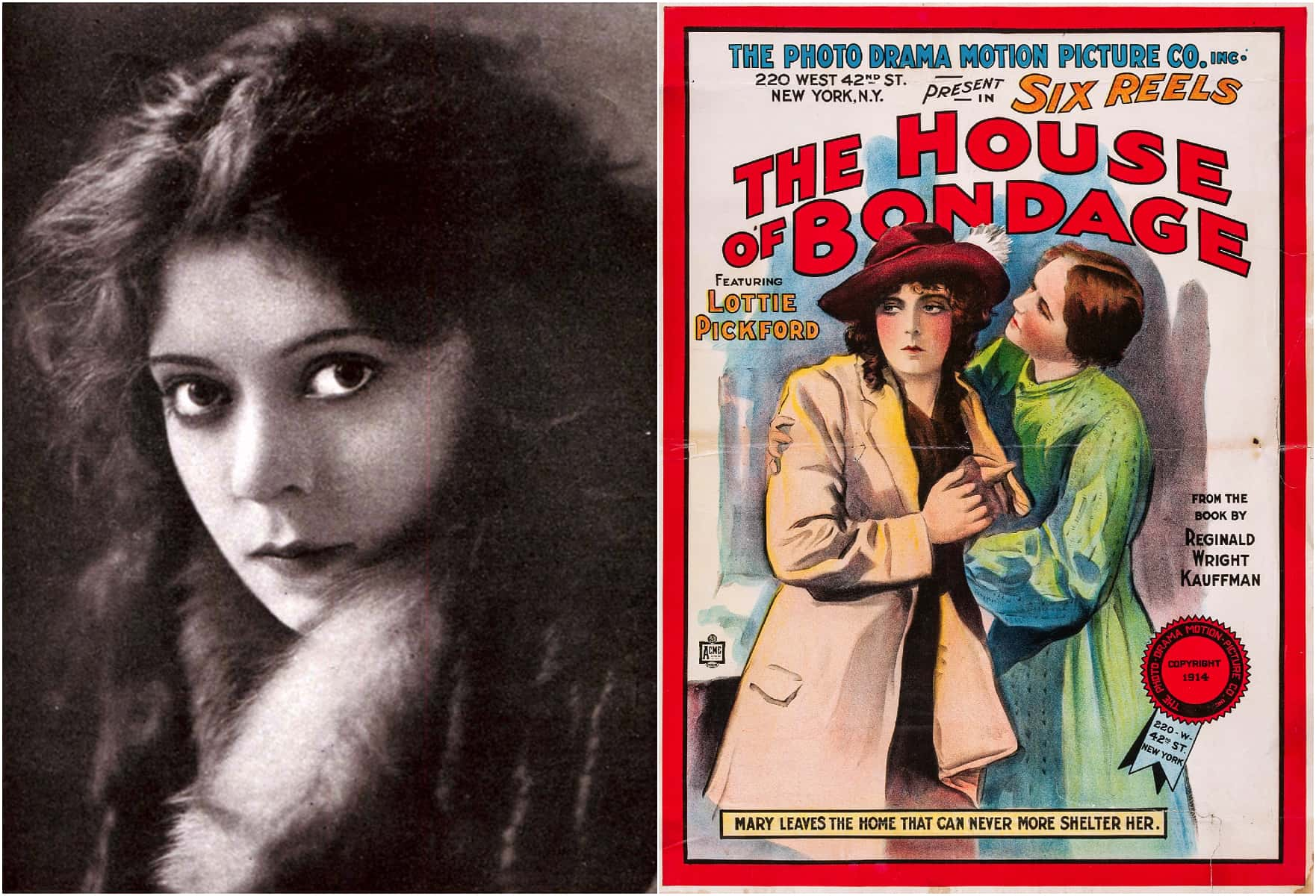
27. Act Your Age
The great irony of Pickford’s life was that she was such a powerful and influential woman behind the scenes in Hollywood, yet she was famous for playing young women onscreen, even well into her adulthood. In 1917, she played the 12-year-old protagonist of The Little Princess when she was 24 years of age!
28. Family Reunion
The only film in which Pickford appeared alongside both her siblings was the 1915 silent film Fanchon the Cricket. It’s also said to be the film debut of dancing stars Fred and Adele Astaire, but this is unproven and unconfirmed.
29. I Can’t Stop Being the First One!
Before she co-founded United Artists, Pickford and her mother co-founded the Mary Pickford Film Corporation. With that, she became the first woman in Hollywood to own her own film company.
30. A Retirement Charity
Pickford developed a respectable reputation as a philanthropist. One of her most lasting impacts came in 1932, when she began the “Payroll Pledge Program.” People in the industry were encouraged to dedicate half their paycheques to the Motion Picture Relief Fund, in an effort to give something back. This eventually led to the Motion Picture Country House being set up for retiring members of the industry, regardless of whether they could actually afford to live in that residence.
31. Way Too Pessimistic
Incredibly, Pickford had a plan to destroy all her films before her death. Her rationale was that nobody would care about them anyway. Thankfully, Pickford was persuaded not to go through with this plan, and her legacy continues to exist far beyond her own lifetime.
32. I’m Ready, Mr. DeMille!
As if she wasn’t the first to do enough things, Pickford was also the subject of the very first cinematic close-up shot in Hollywood! It was shot for a 1912 movie called Friends. Do you think she played Monica, Rachel, or Phoebe?
33. We’ll Debut Together
Despite a long career in the film industry as a woman in front of and behind the camera, Pickford went decades without appearing on television. Her first ever television appearance was on March 19, 1953. She appeared as a presenter for the Academy Awards, giving Cecil B. DeMille his Best Picture Oscar for The Greatest Show on Earth. Interestingly, it was a double first. Not only was it the first time that Pickford appeared on television, but it was also the first time that the Oscars were televised!
34. Deadbeat Dad
Pickford’s father, John Charles Smith, suffered from alcoholism and would abandon the family when Pickford was still a little girl. He worked several different jobs before he found work as a ship’s purser. Unfortunately for Smith, he would meet an early end in 1898, due to an accident which caused a fatal blood clot.
35. Going Down and up Again
Following the death of their father, Pickford and her family were stricken with poverty. Fortune would strike though, with Pickford’s mother bringing boarders into the house in order to make ends meet. One of these boarders was a theatrical stage manager for the Cummings Stock Company, who suggested that Pickford and her sister go into acting. Pickford and her sister Charlotte would begin playing small roles while their mother played the organ.
36. Unhappy Marriage
In 1911, Pickford married her first husband, a silent film actor named Owen Moore. However, their marriage was far from perfect. Like Pickford’s father and brother, Moore was an alcoholic, but he was also deeply insecure about Pickford being the more famous actor. This led to domestic violence and to Pickford living separately from Moore on several occasions.
37. Hello, Second Husband!
When the United States entered the First World War, Pickford embarked on a nationwide tour to encourage the purchase of Liberty Bonds to raise money for the war. In this, she was joined by renowned actor Douglas Fairbanks Sr. Is it even surprising that the two of them had a fling?
38. Out With the Old, In With the New
Pickford and Owen Moore divorced on March 2, 1920. Moore insisted on a $100,000 settlement before he agreed to divorce. Pickford didn’t even wait a month to marry Douglas Fairbanks Sr., and they wed on March 28. Like the Brangelina of their day, Fairbanks and Pickford were referred to as Hollywood royalty, drawing crowds whenever they went out in public.
39. All Good Things Must End
The publicity of Pickford’s marriage to Douglas Fairbanks Sr. sadly contributed to their relationship’s disintegration. Their schedules were filled up with movie-making or public appearances of one form or another. Pickford and Fairbanks also struggled with the end of the silent era, leading Fairbanks to embark on an affair. The two of them divorced in 1936. According to Douglas Fairbanks Jr., his father and his stepmother always regretted the failure of their marriage.
40. O Canada!
Despite being born in Toronto, Pickford was technically born a British citizen—Canadian citizenships didn’t exist until 1947. She took up American citizenship when she married Douglas Fairbanks Sr. in 1920, but in her senior years, she became determined to “die as a Canadian.” She acquired her Canadian citizenship in 1978, just a year before she died at the age of 87.
41. The Flies on the Wall Must’ve Been Impressed
While she was married to Douglas Fairbanks Sr., Pickford lived in a sprawling mansion known as Pickfair. The legendary status of Pickfair stems from the vast parties which Pickford and Fairbanks would host. And because of their star power, the couple would regularly rub shoulders with larger-than-life figures in high society. Among the many people who came to their dinners were Charlie Chaplin, Sir Arthur Conan Doyle, Amelia Earhart, F. Scott Fitzgerald, and Albert Einstein!
42. Third Time’s the Charm?
In 1937, Pickford married actor and bandleader Buddy Rogers. They would adopt two children in 1943 and 1944, Roxanne and Ronald. However, Pickford’s relationship with her children was very stormy, with both Roxanne and Ronald later admitting that Pickford had been a very self-absorbed woman. Pickford and Roxanne also clashed bitterly when Roxanne pursued a romantic relationship that her parents didn’t approve of. Despite that, Pickford provided generously for her children and grandchildren upon her death.

